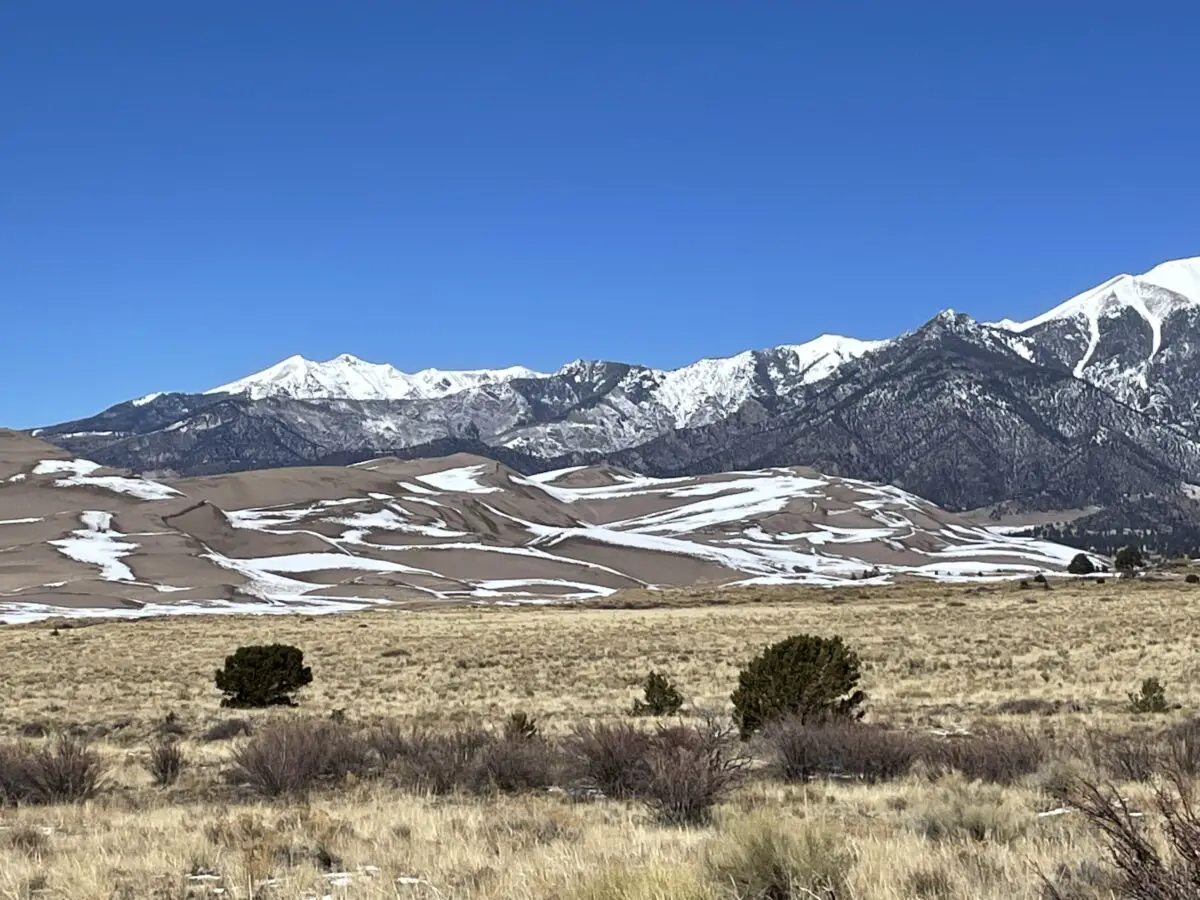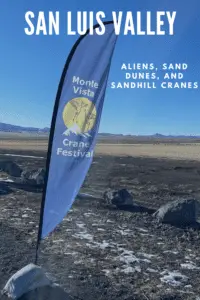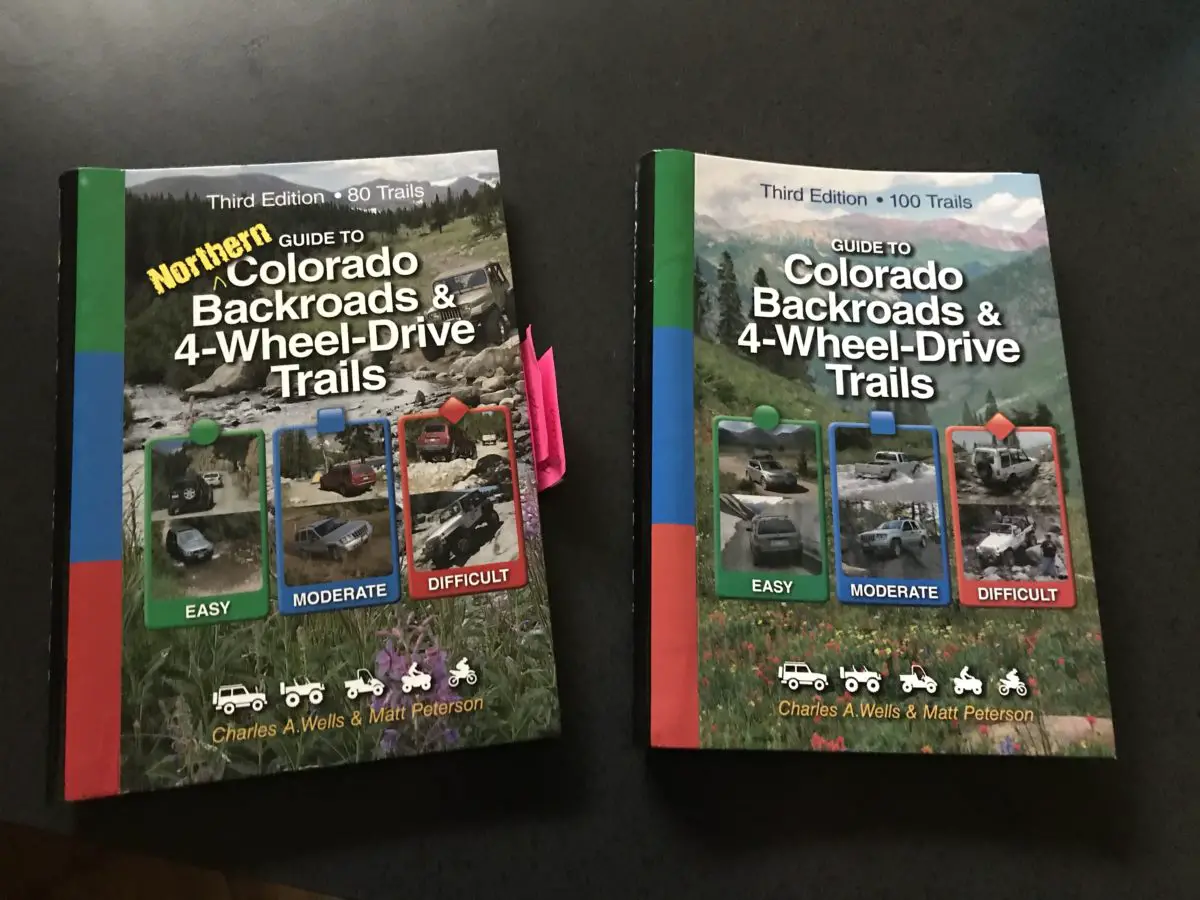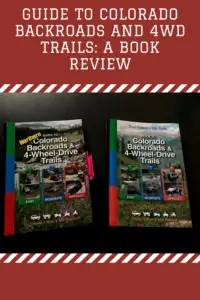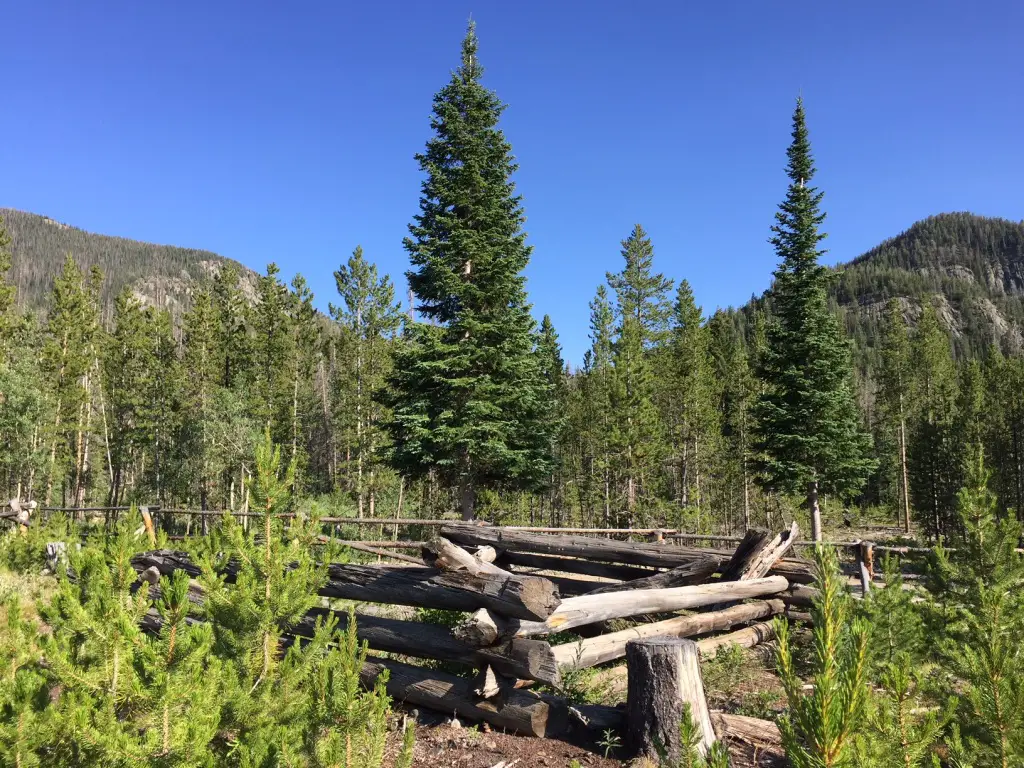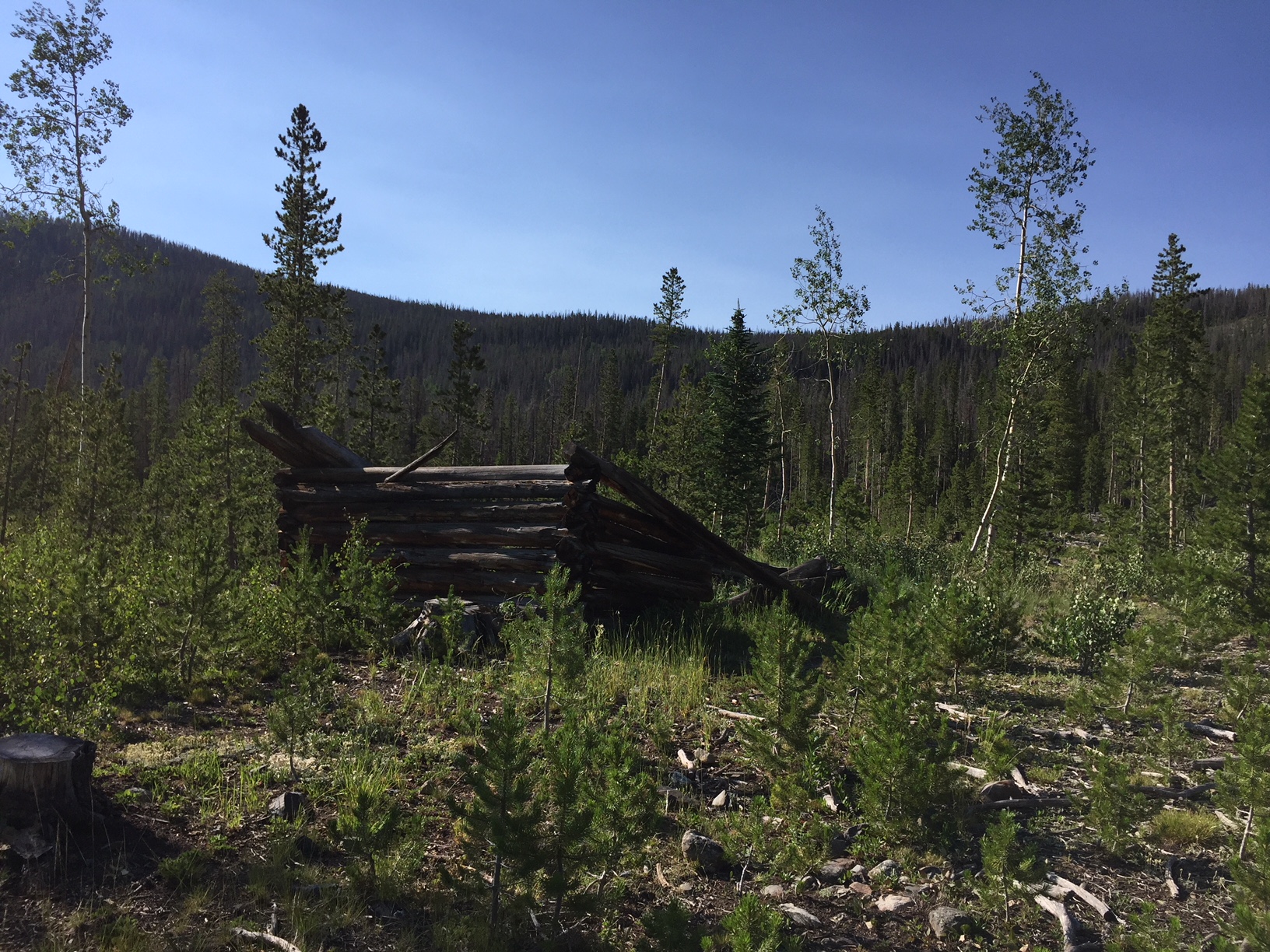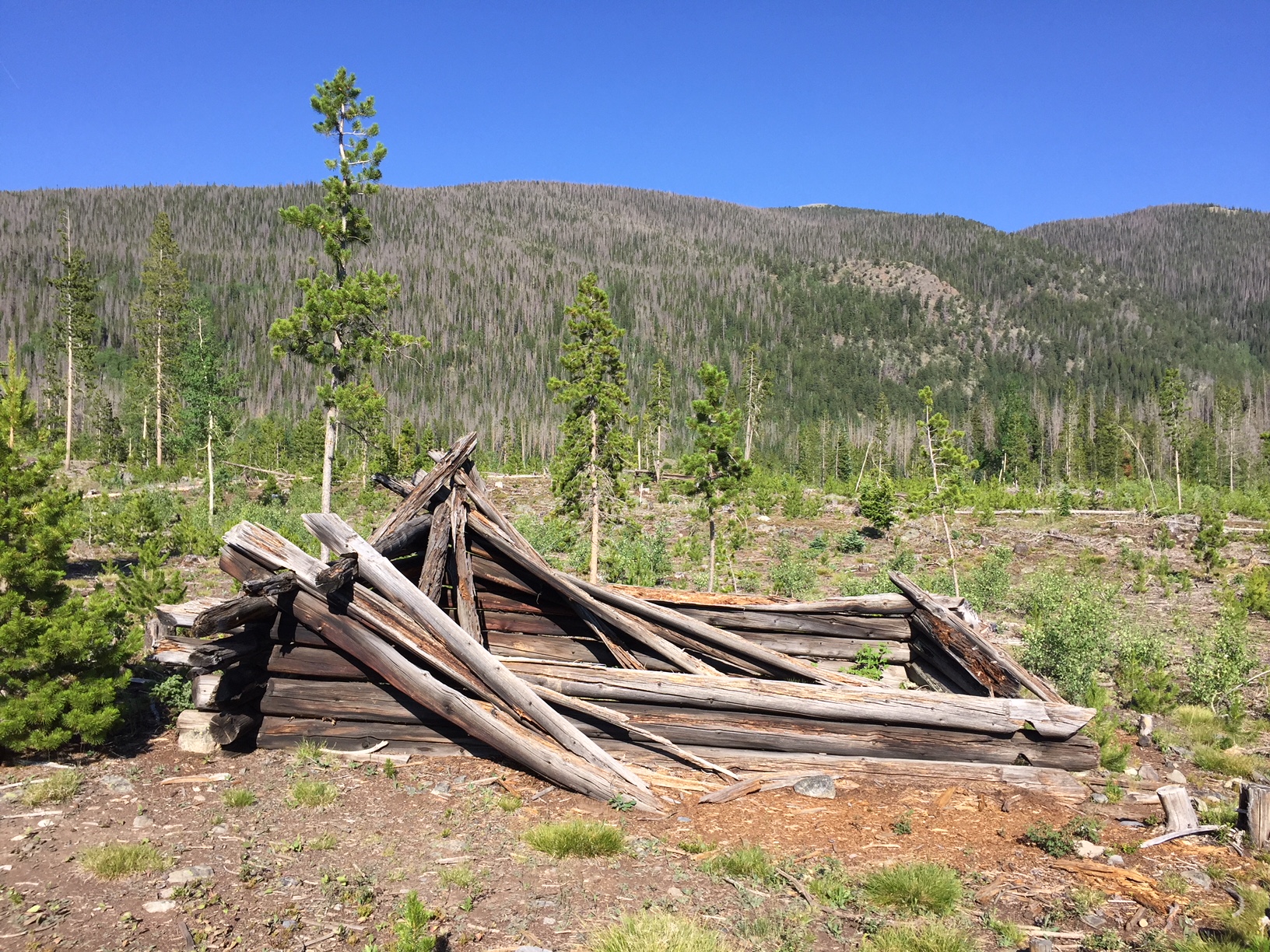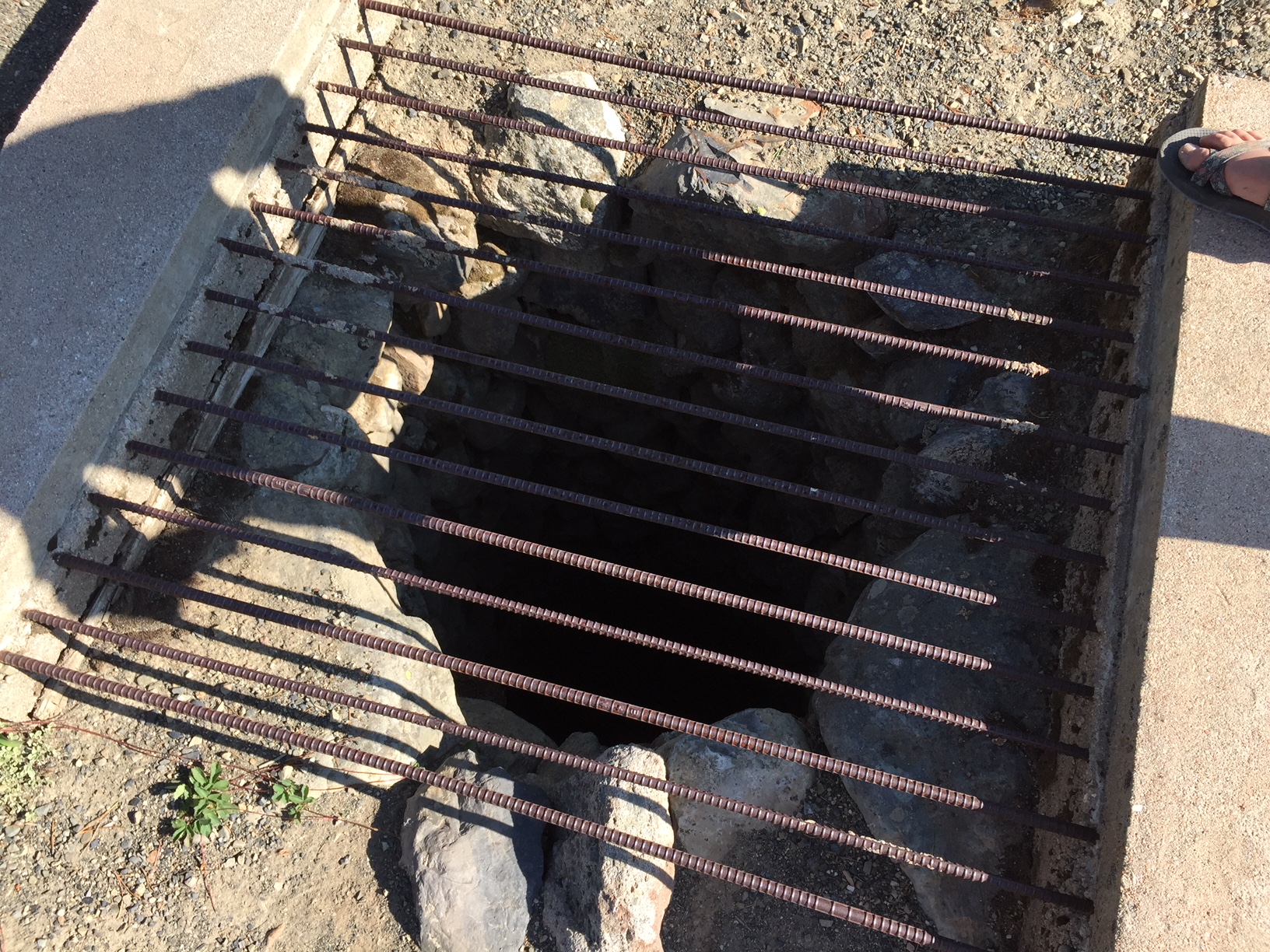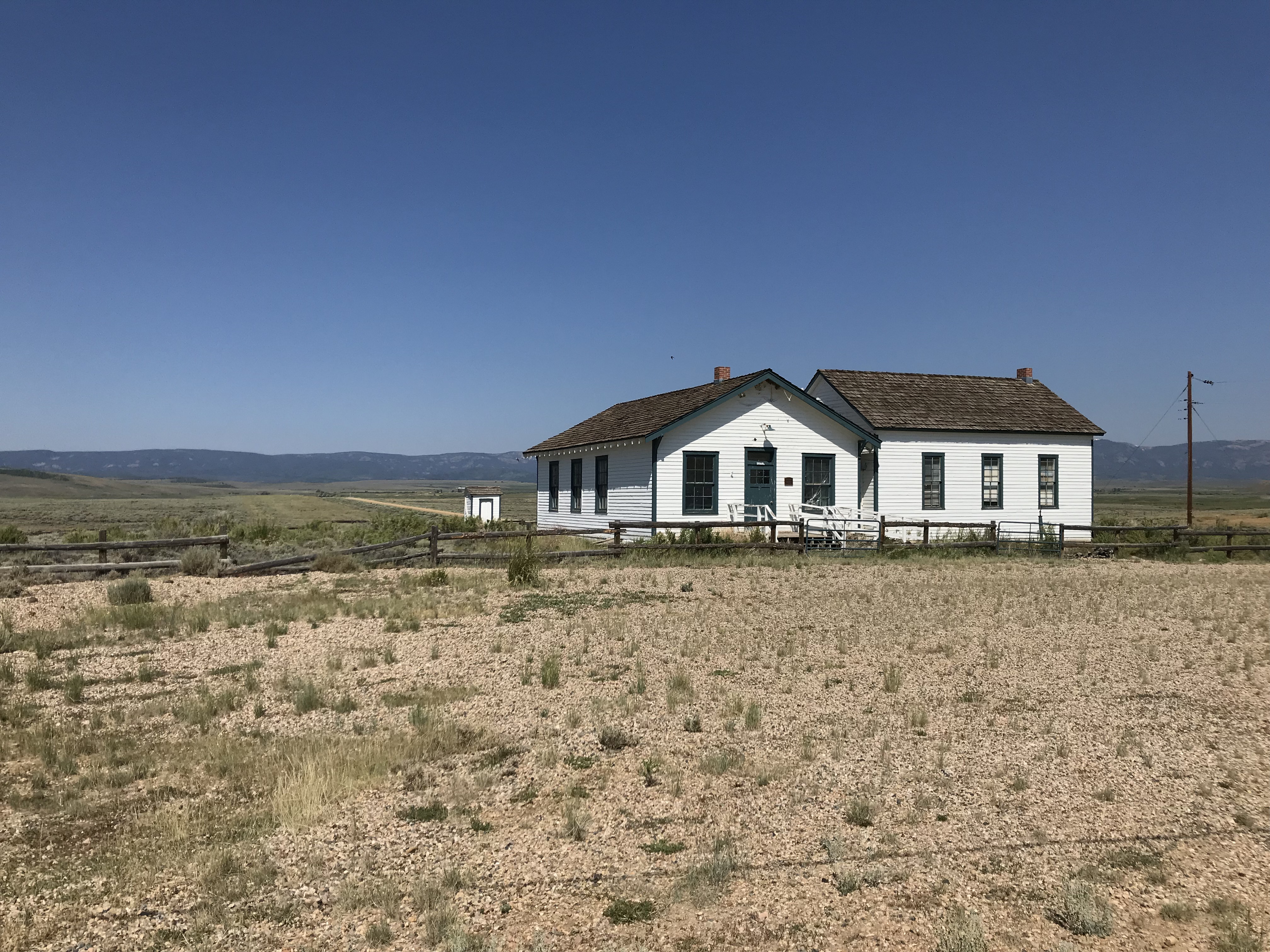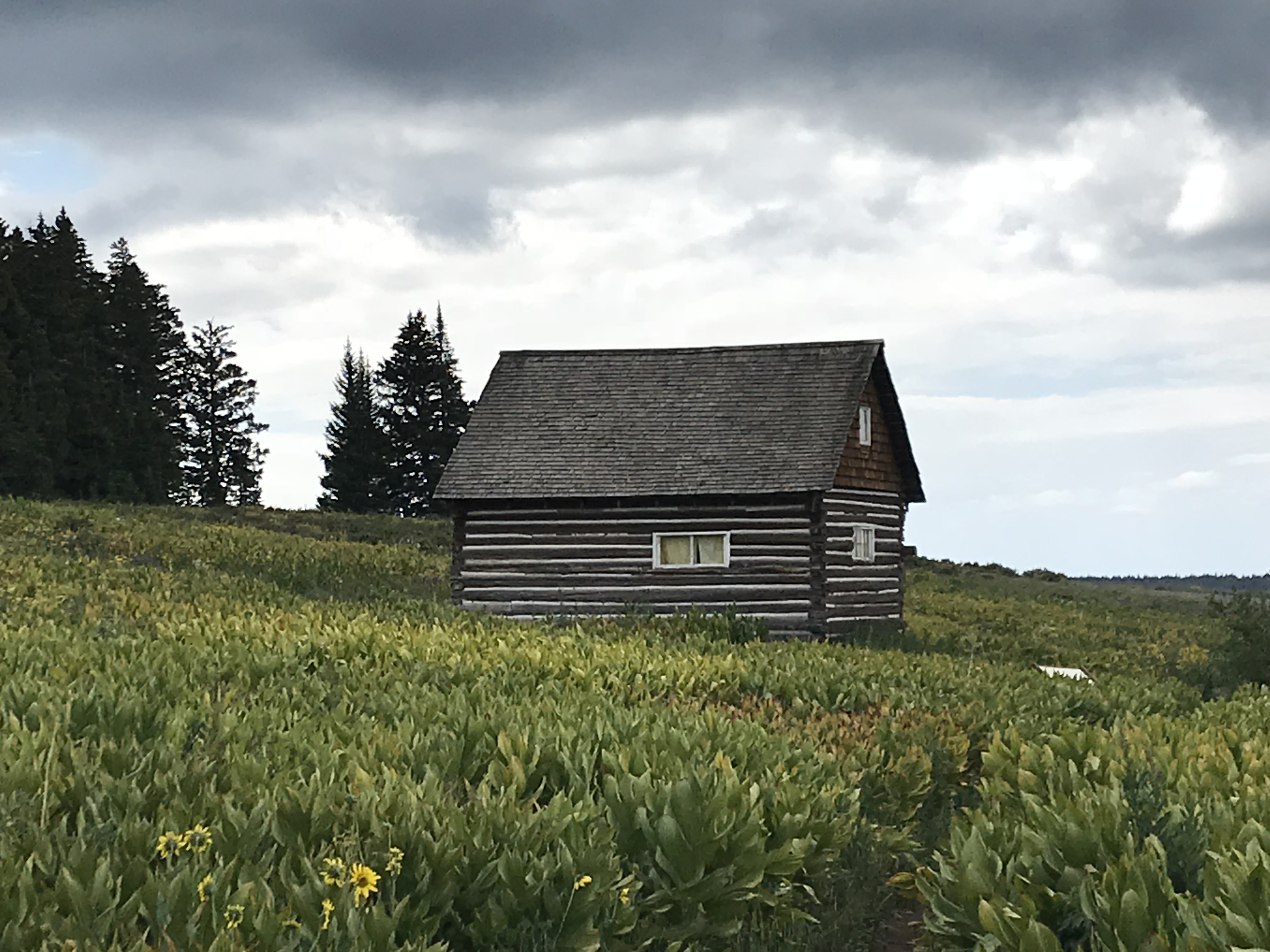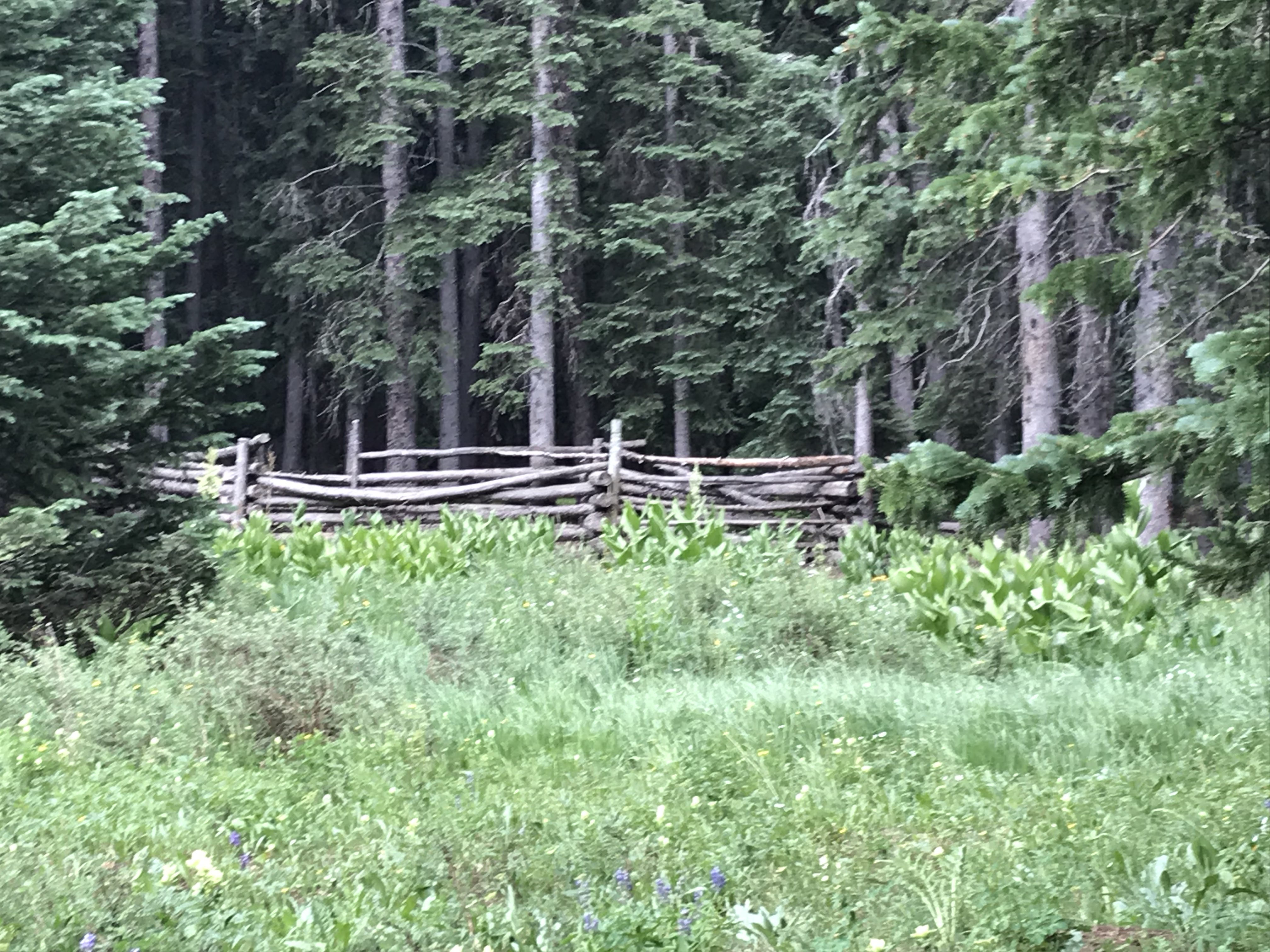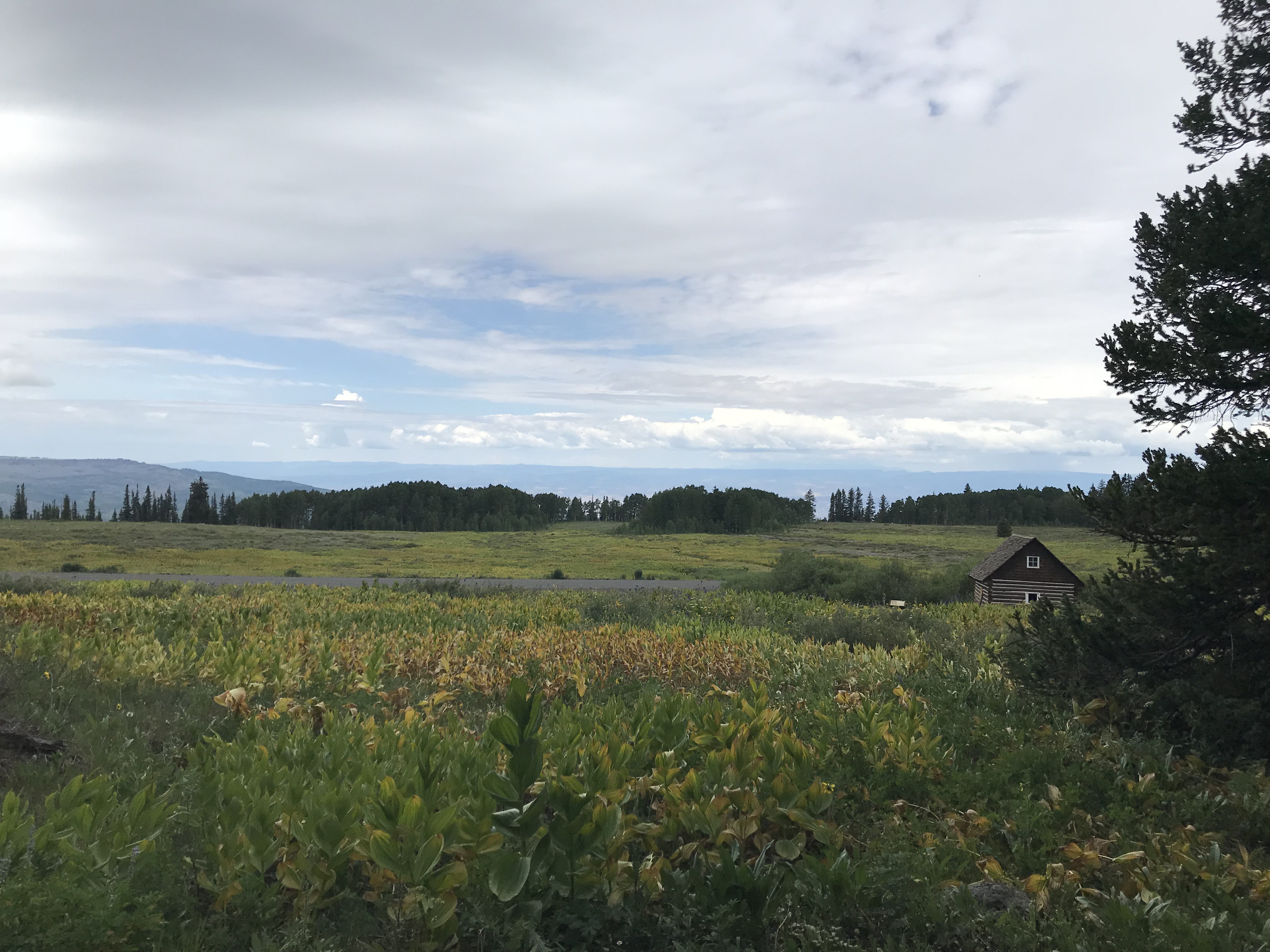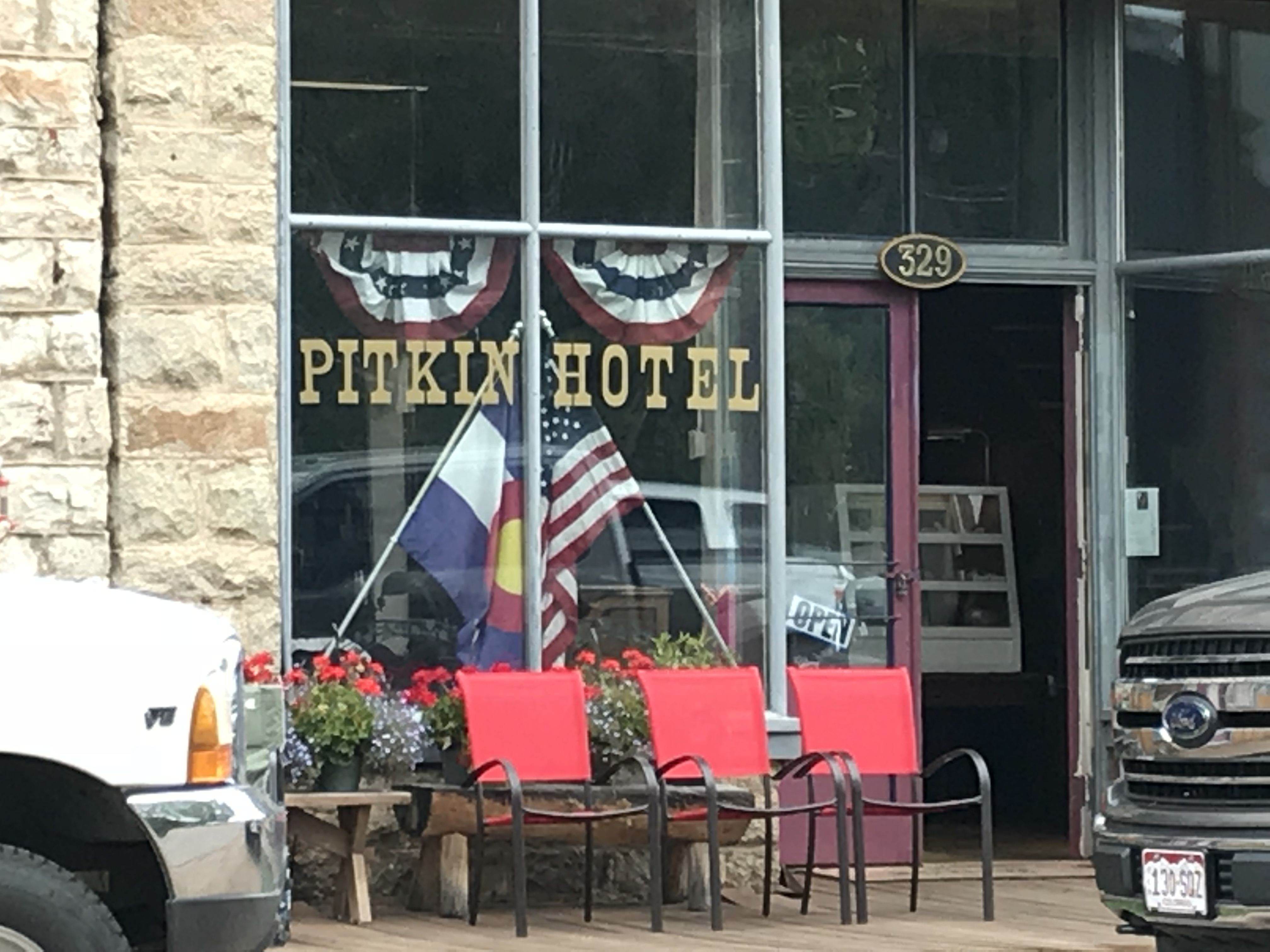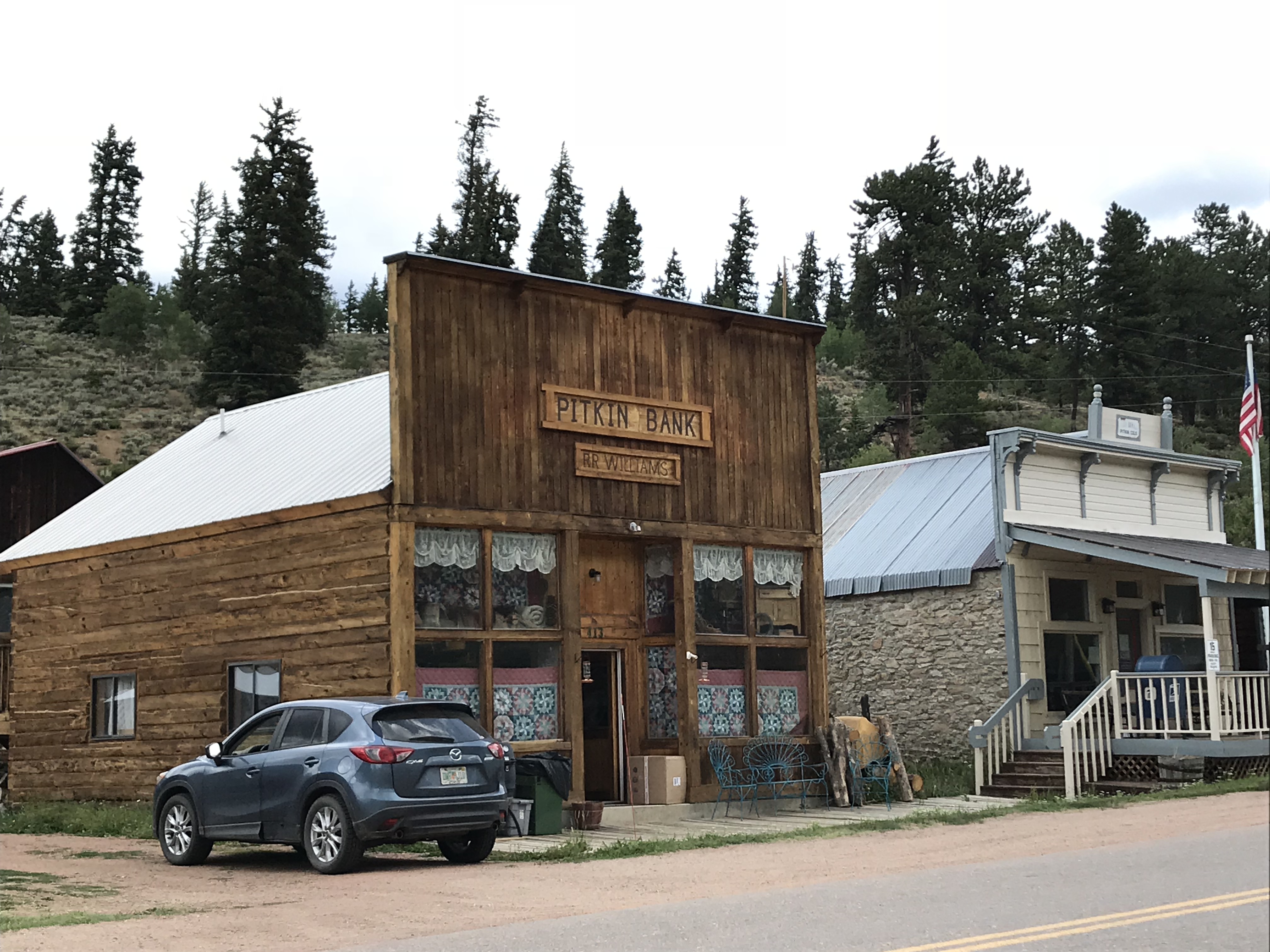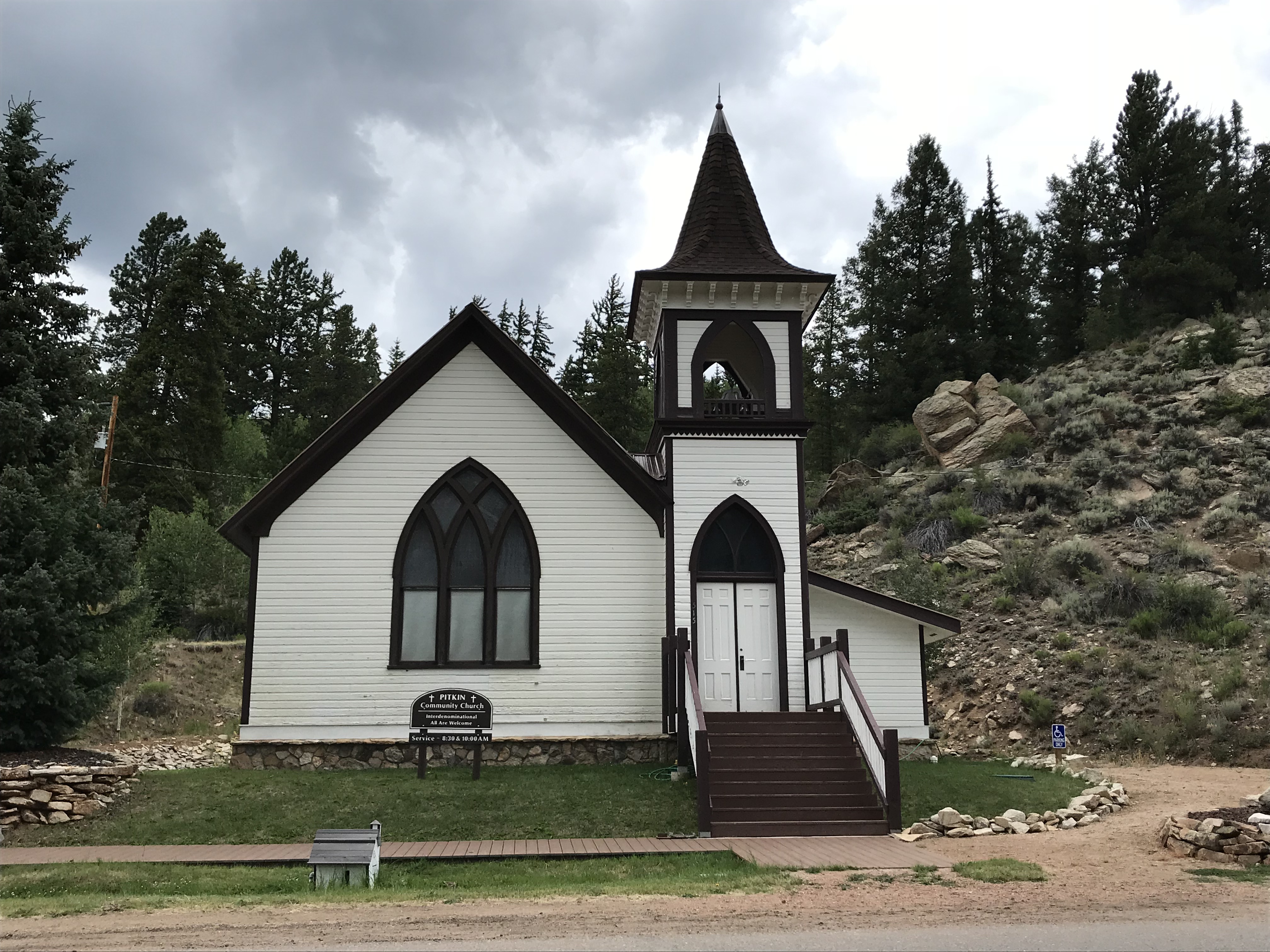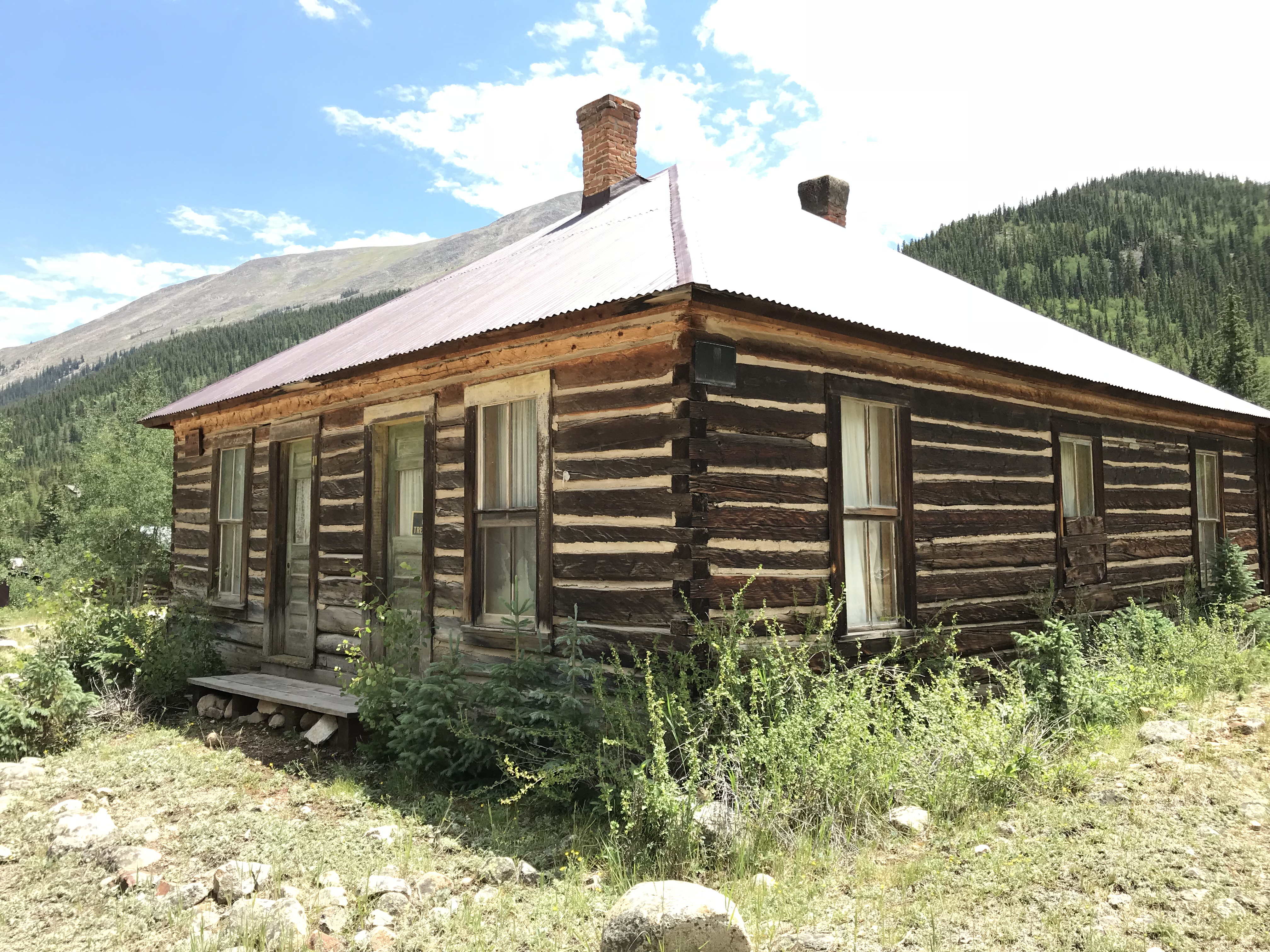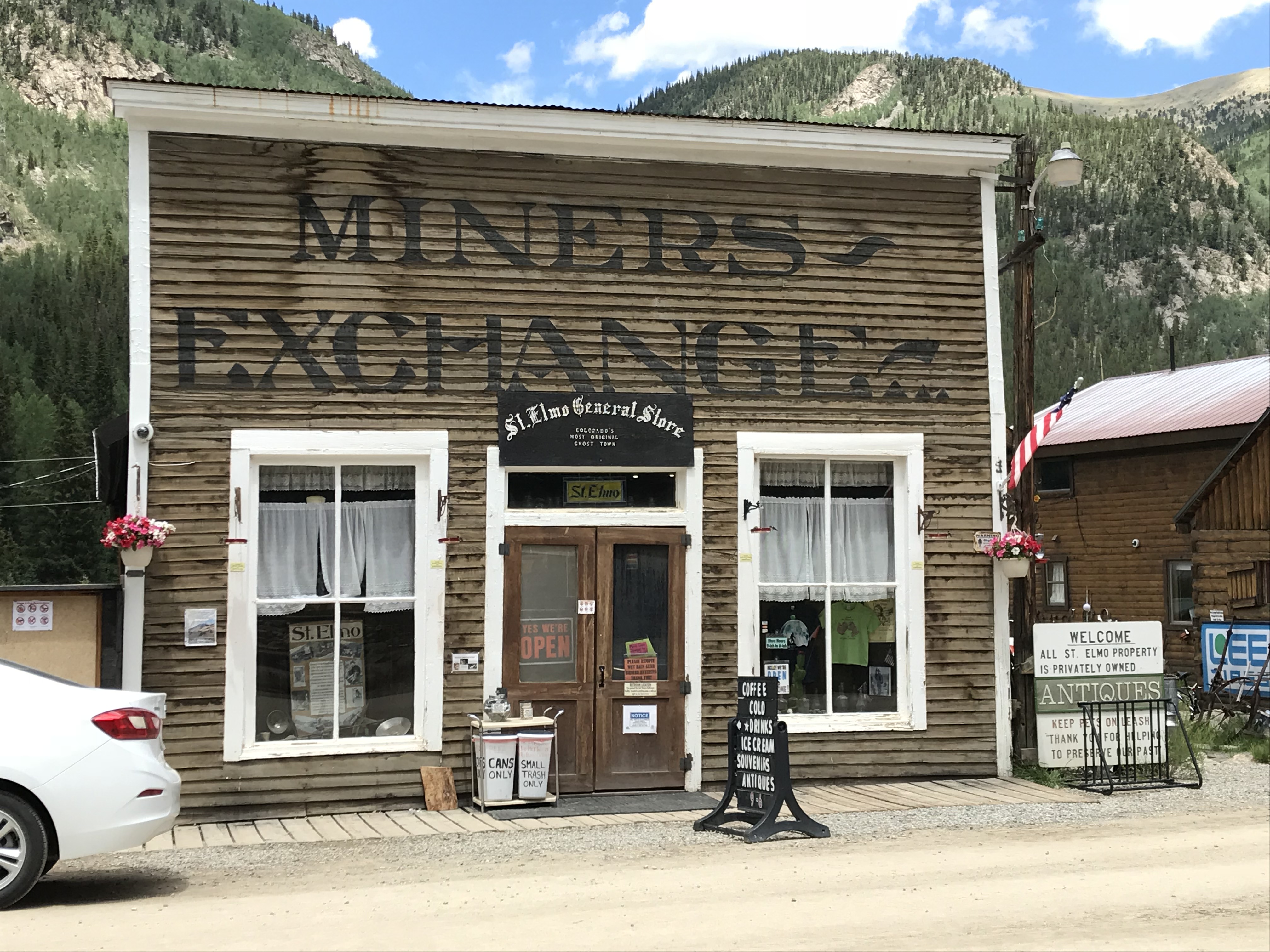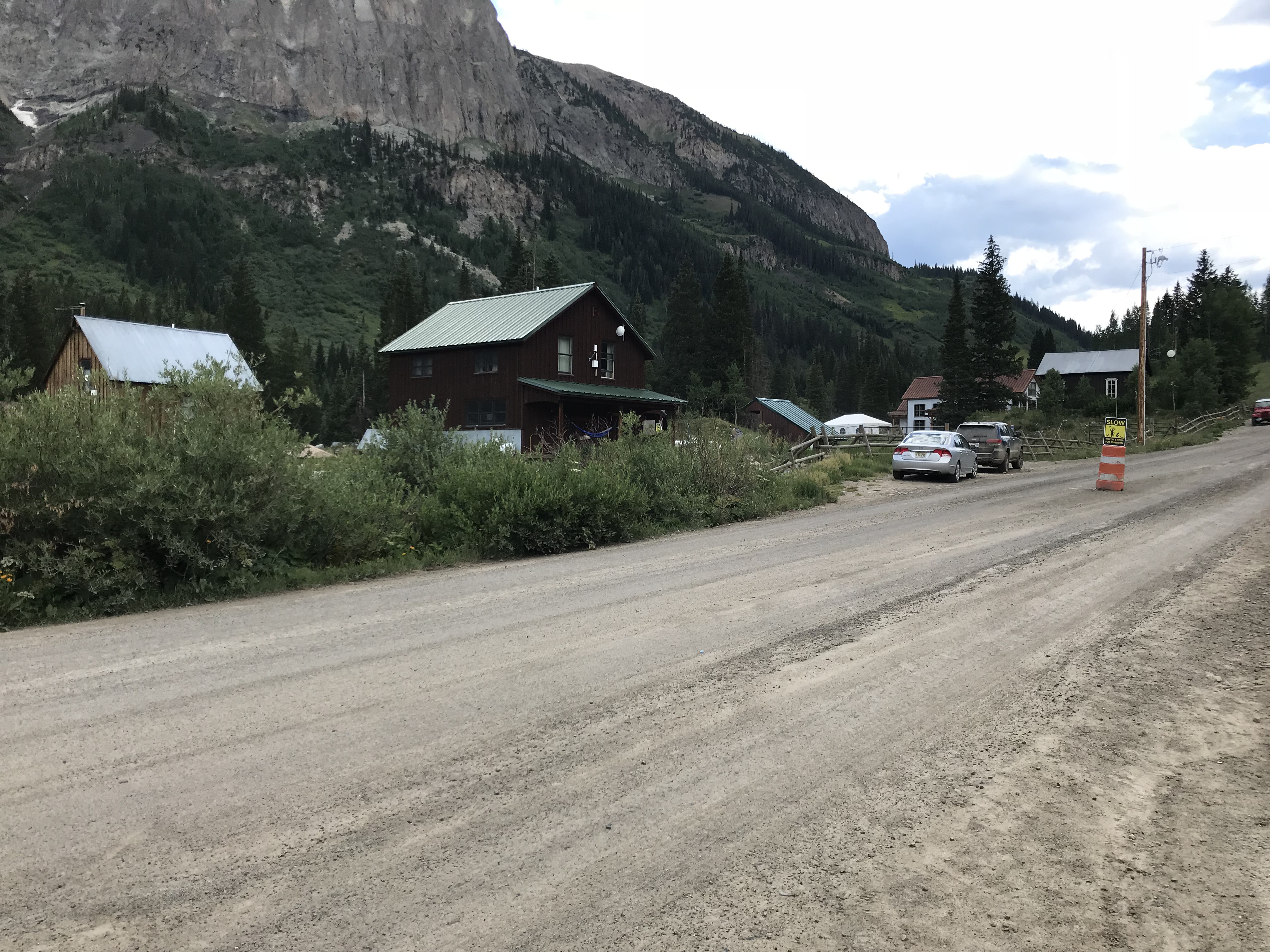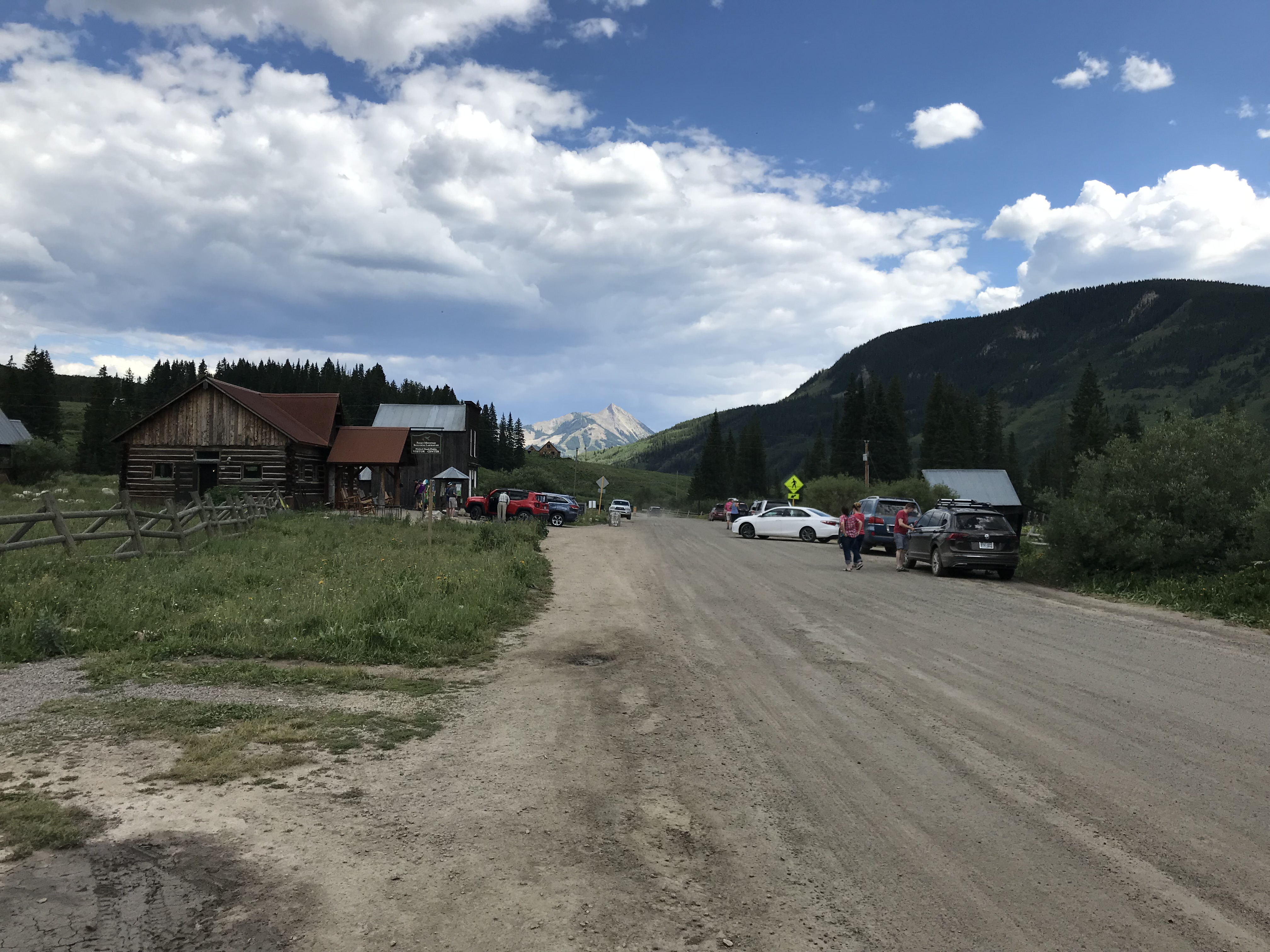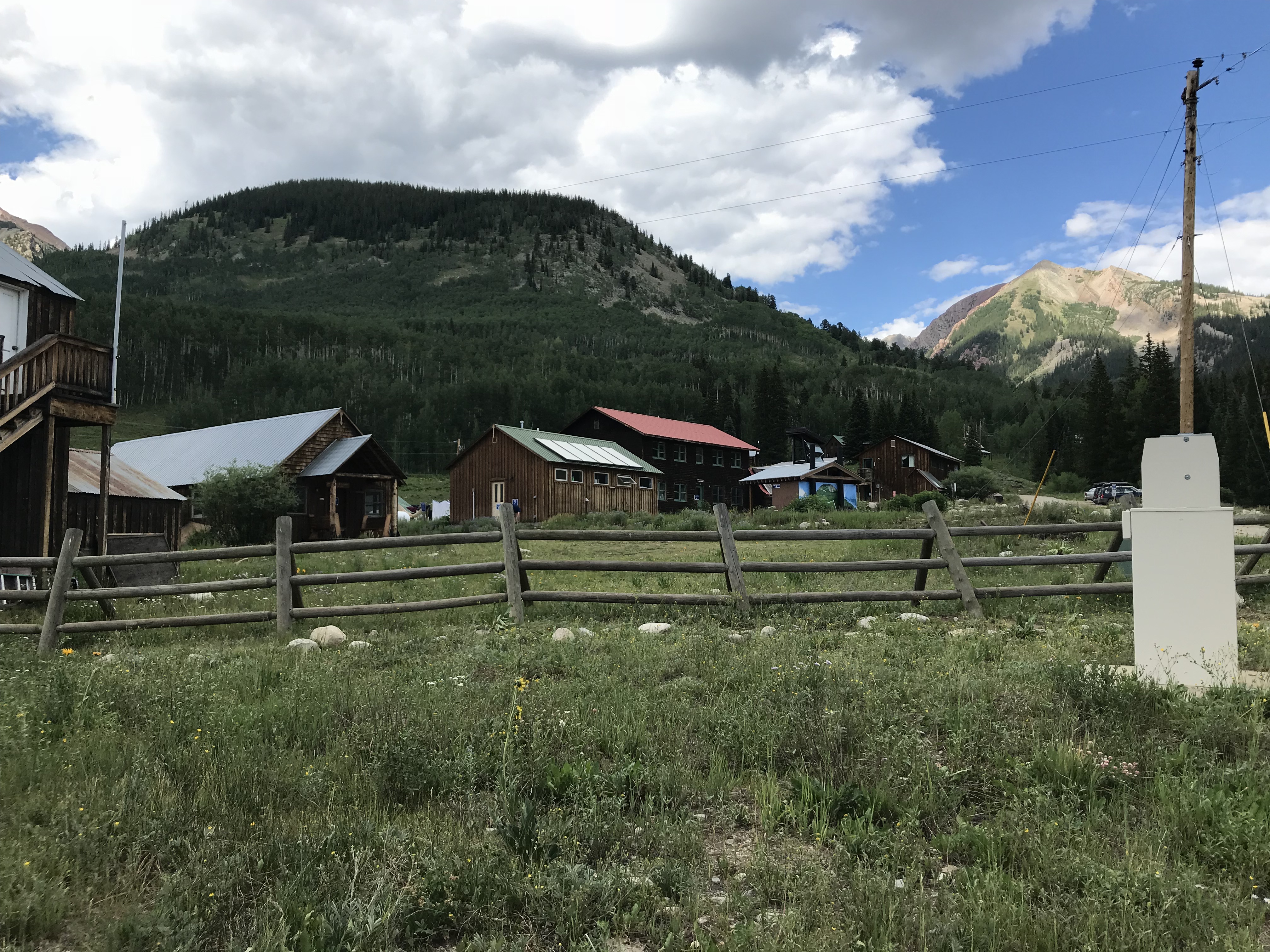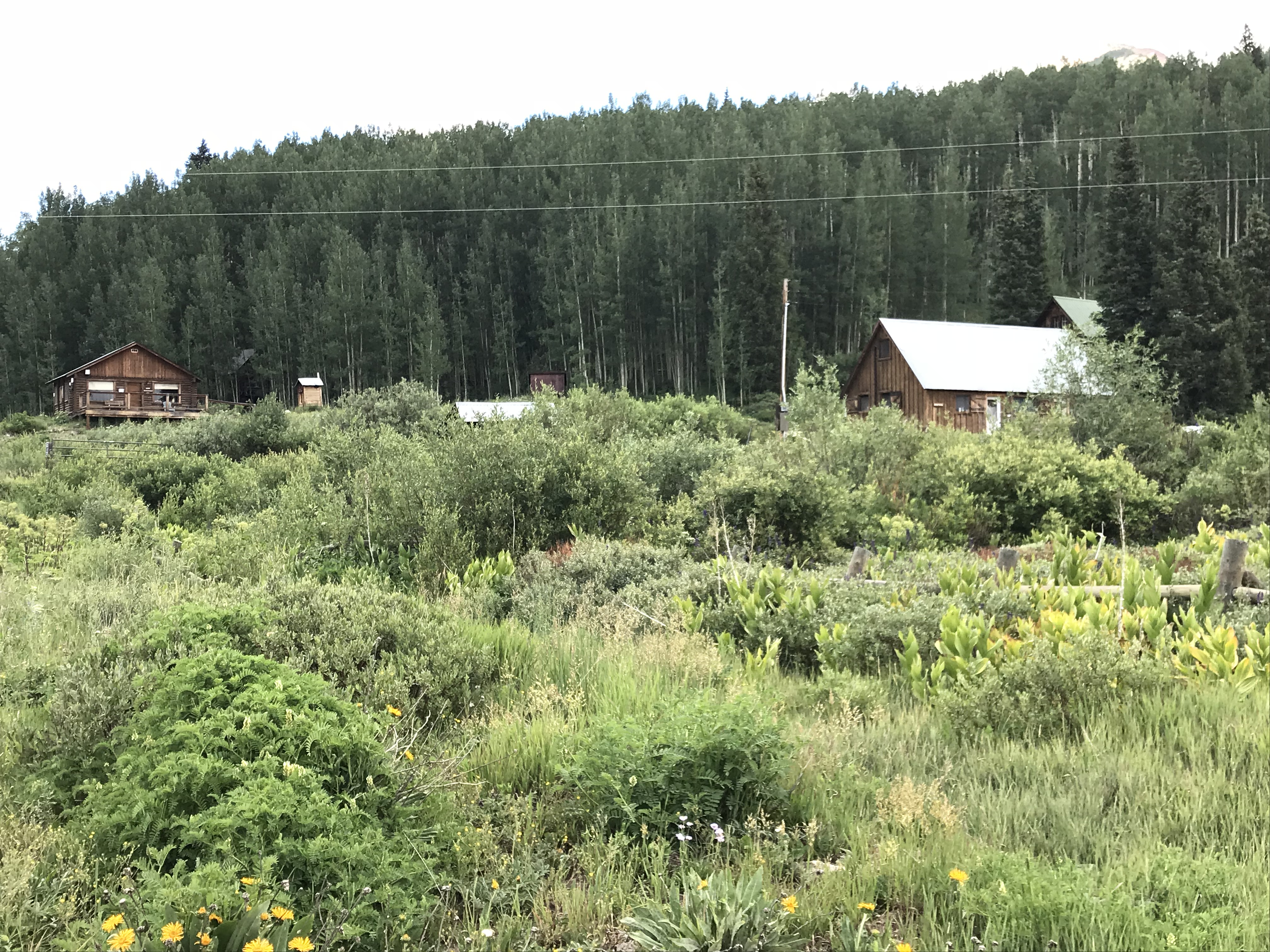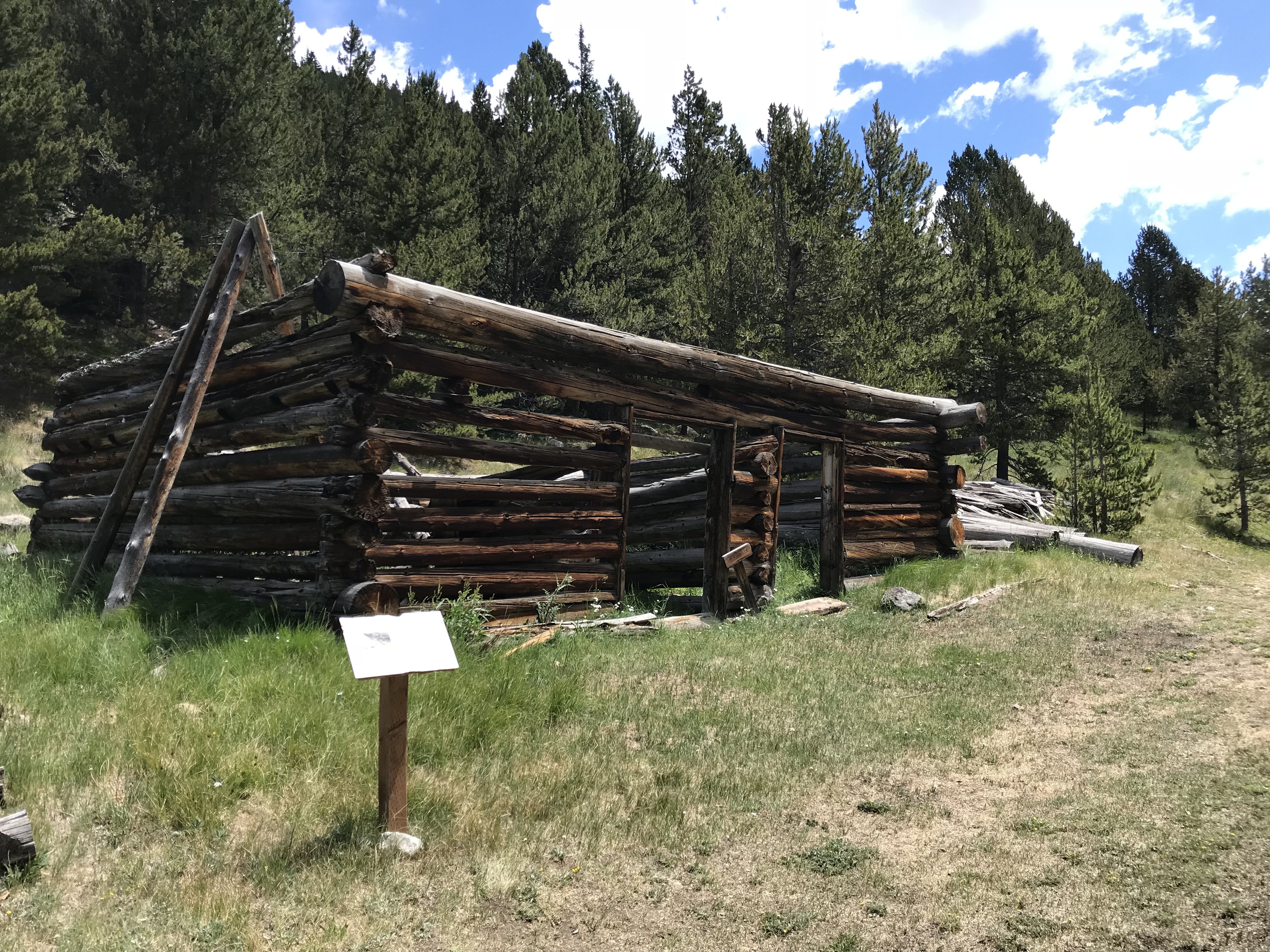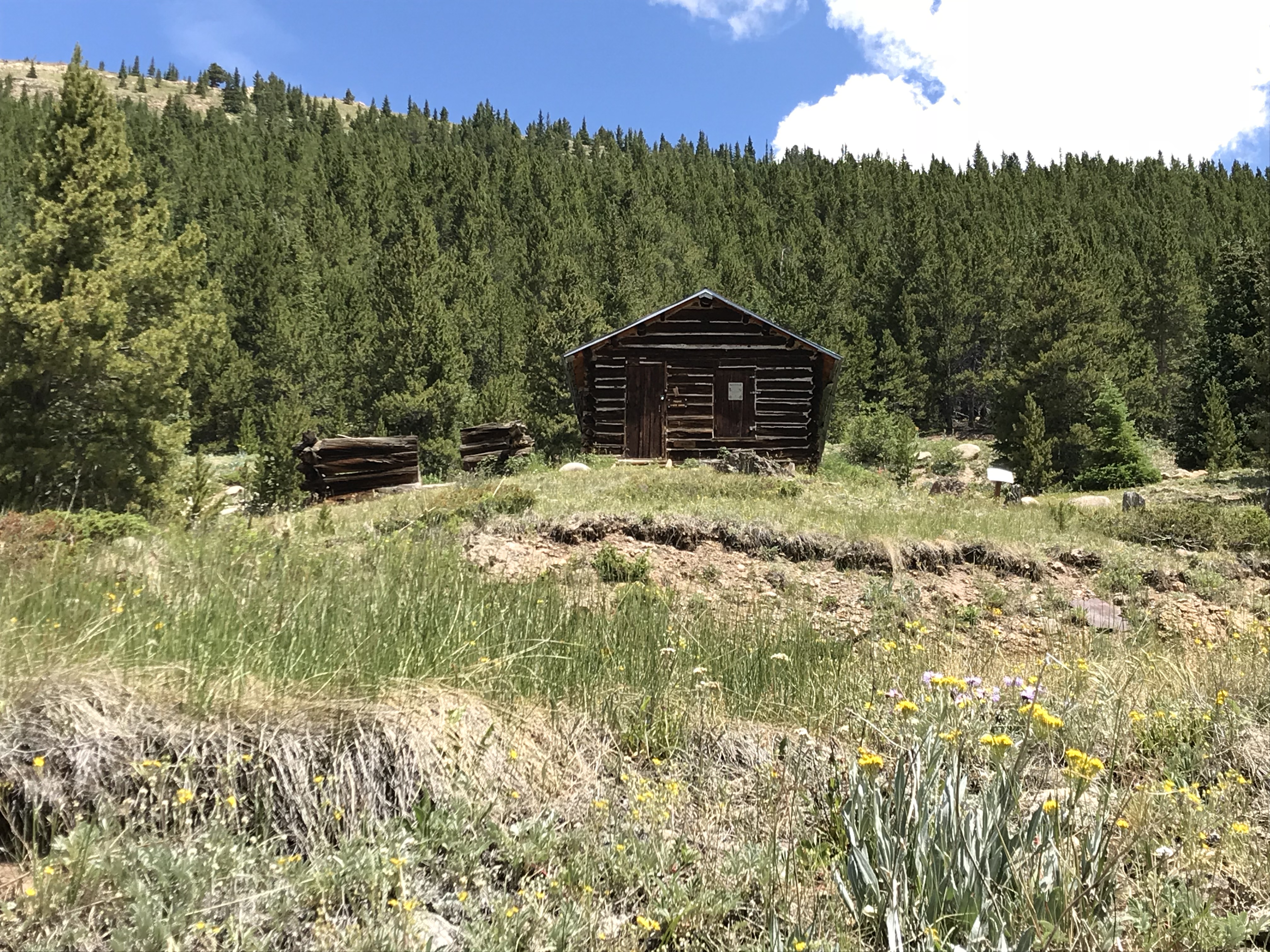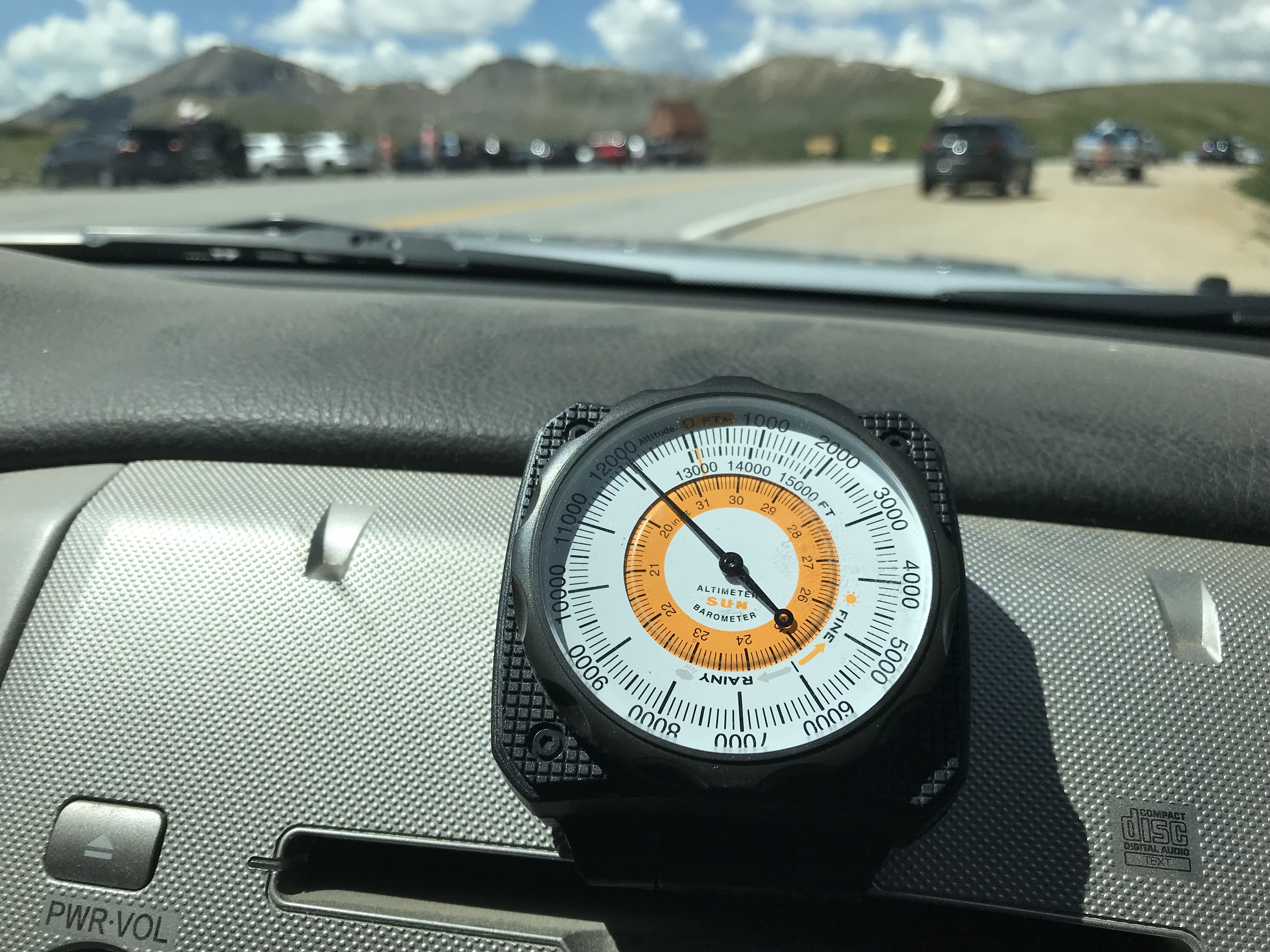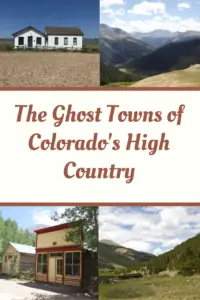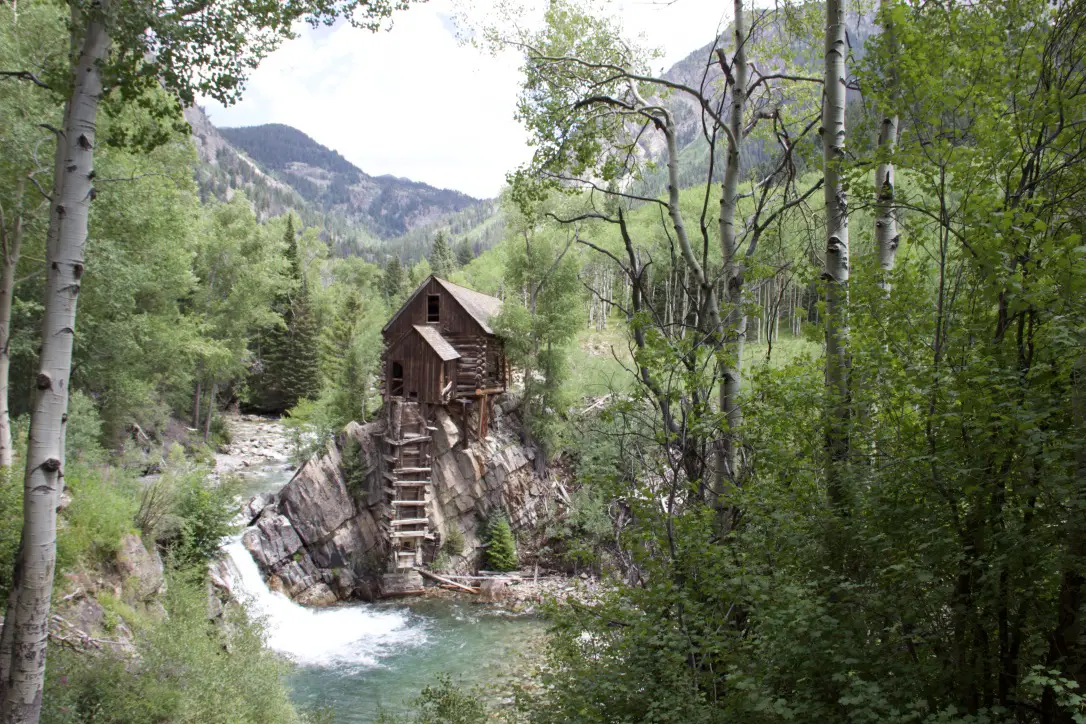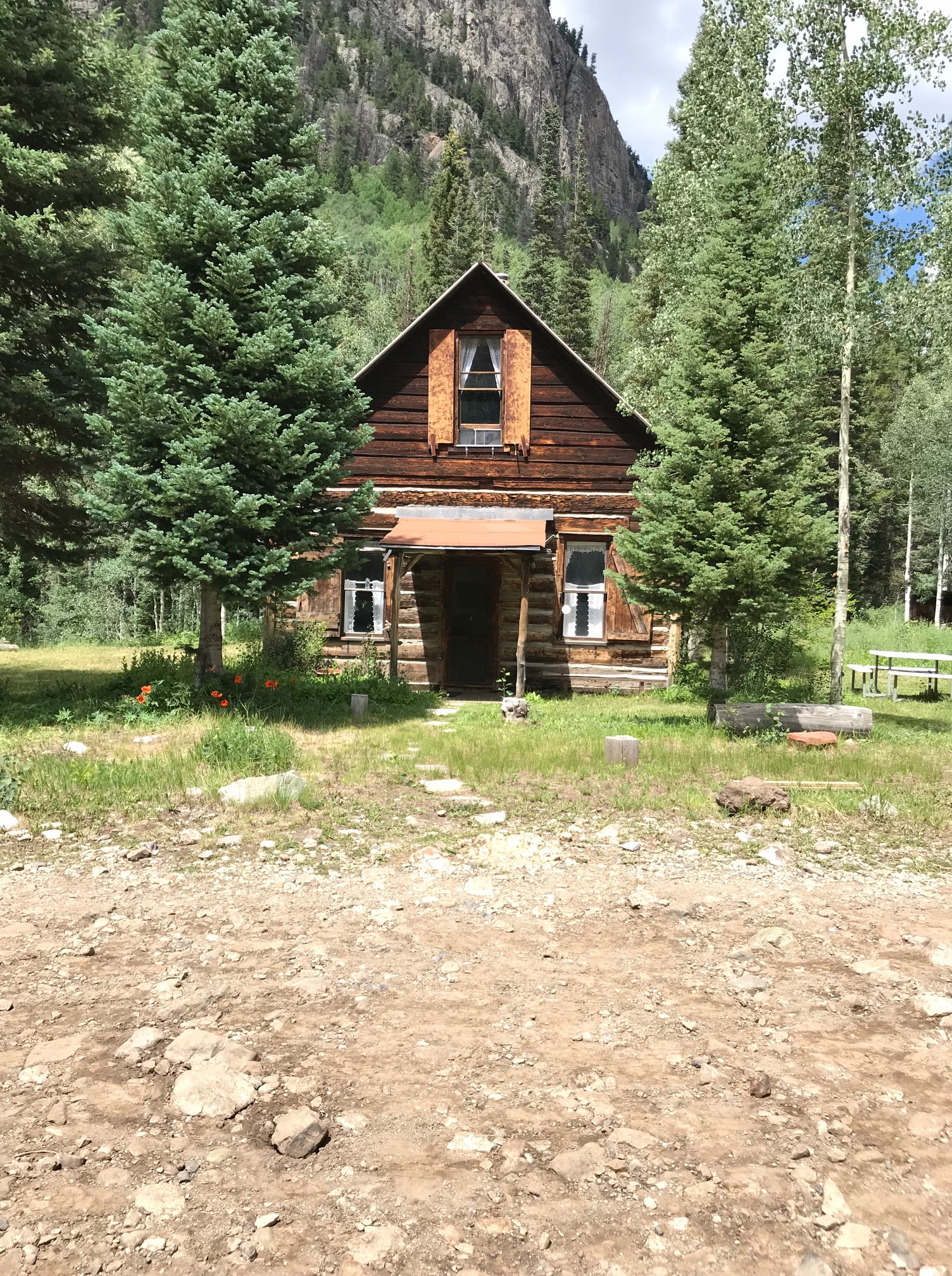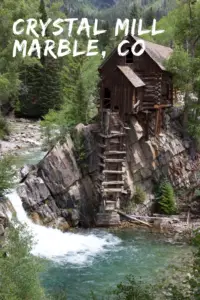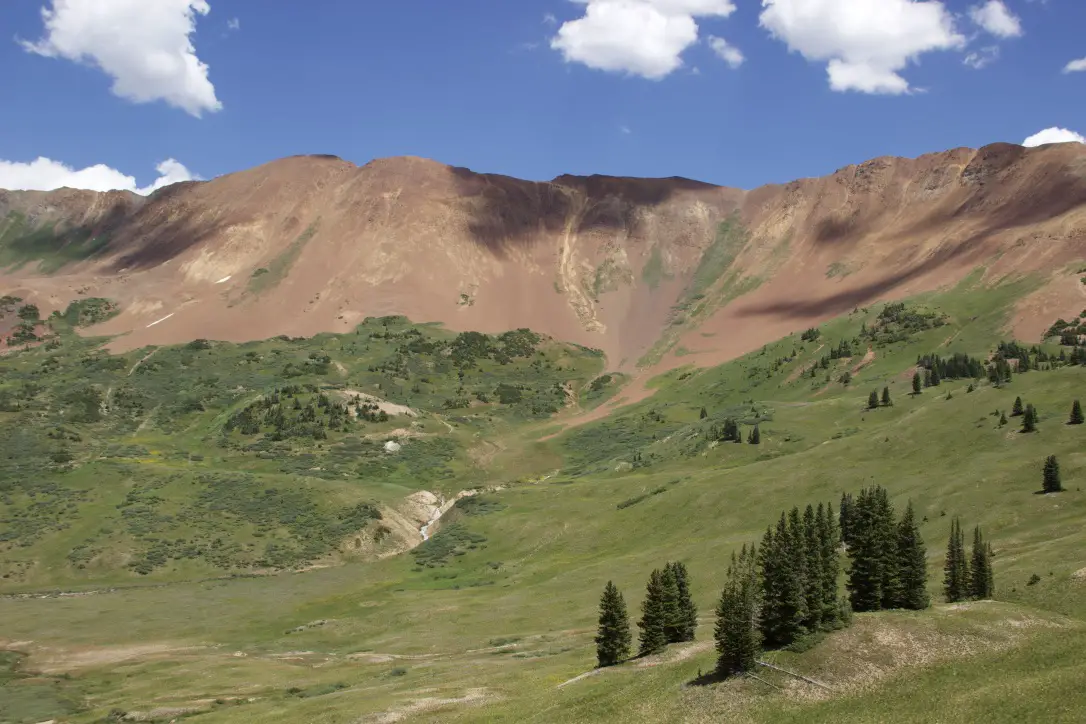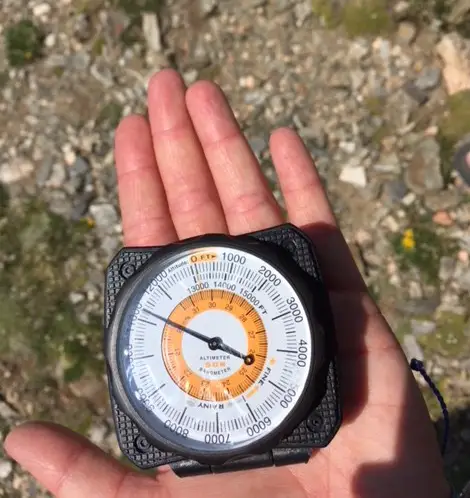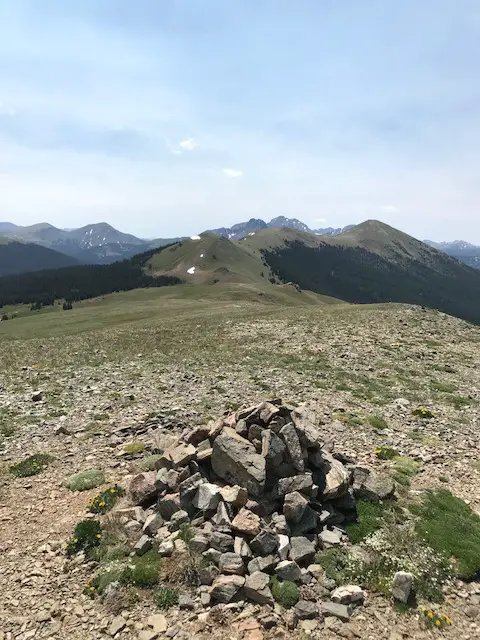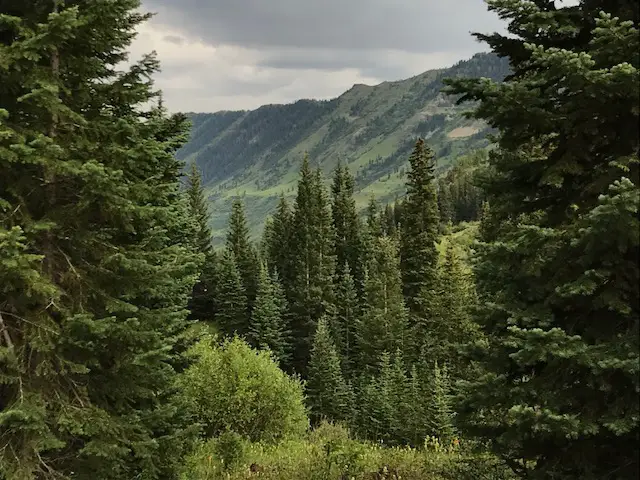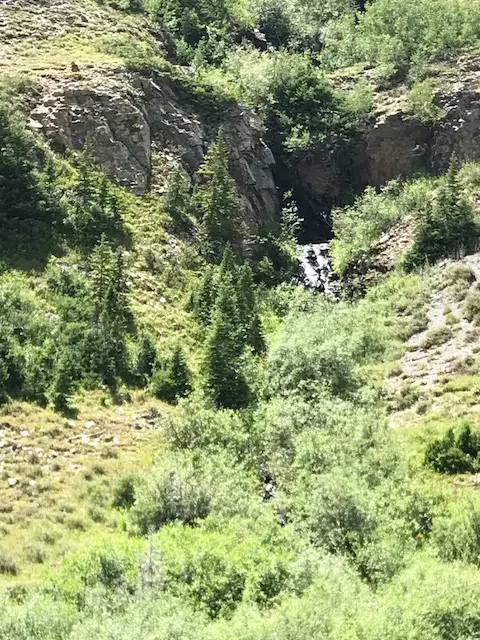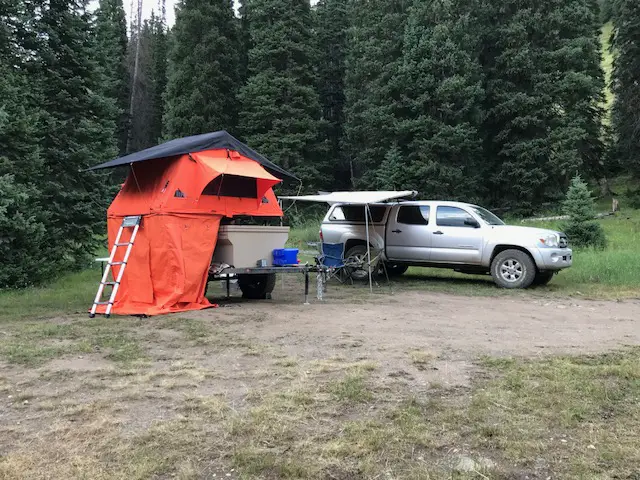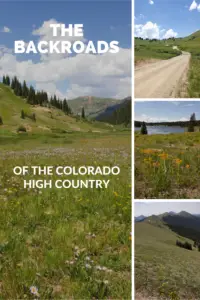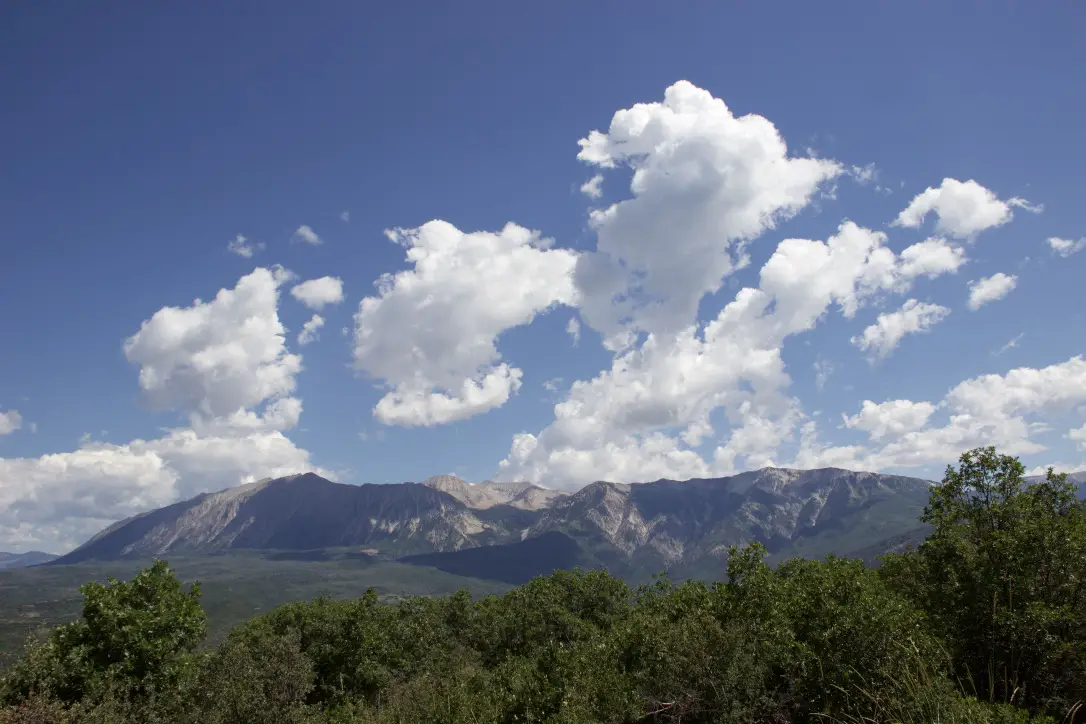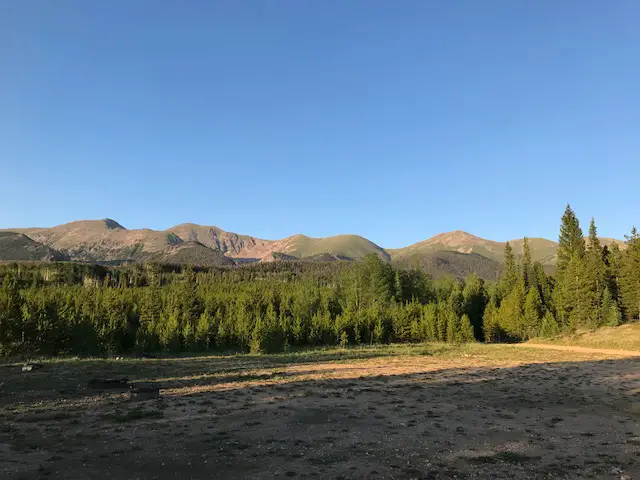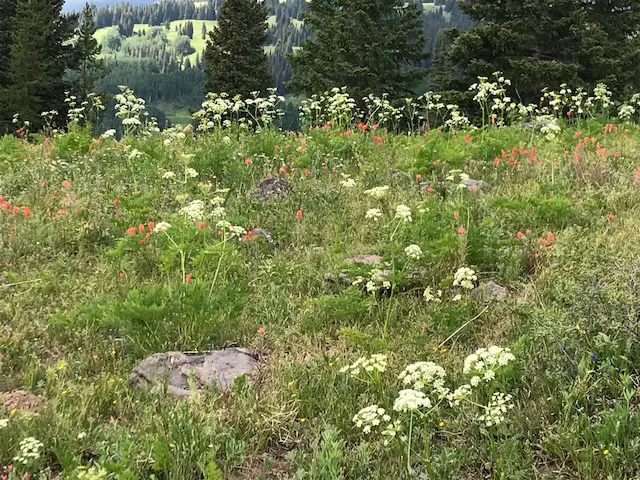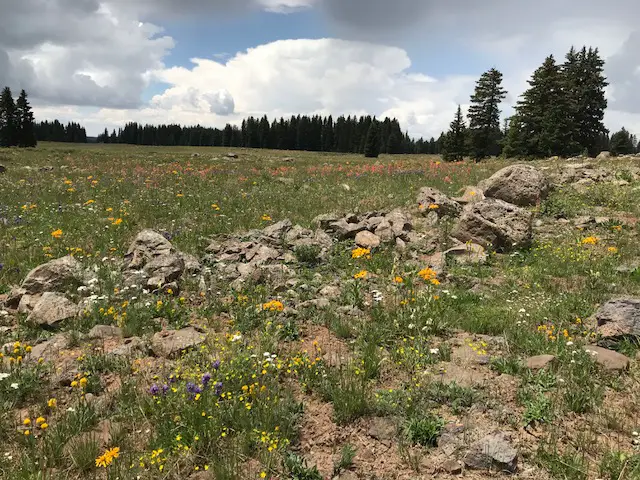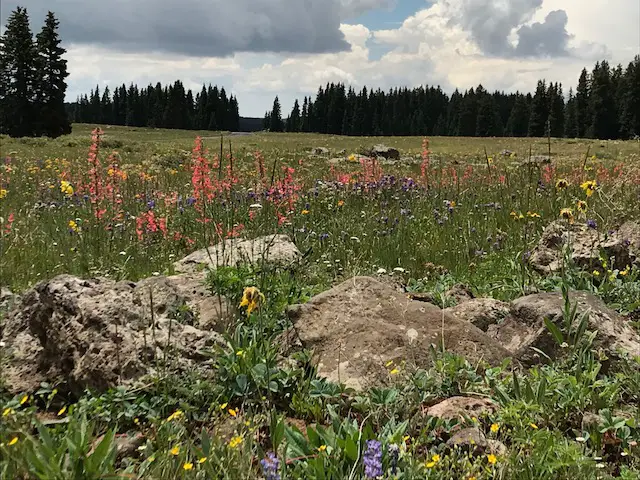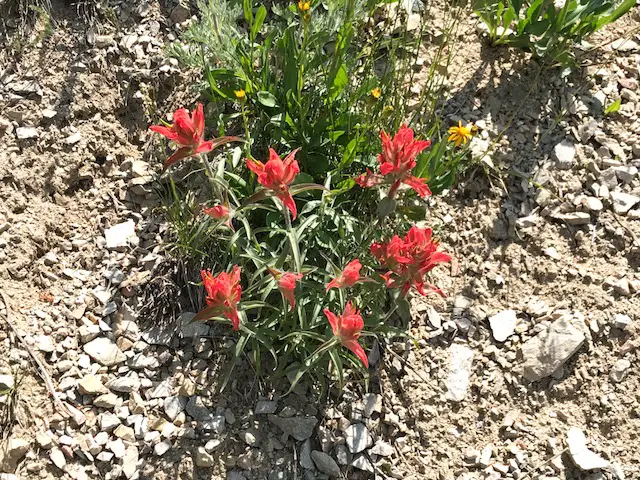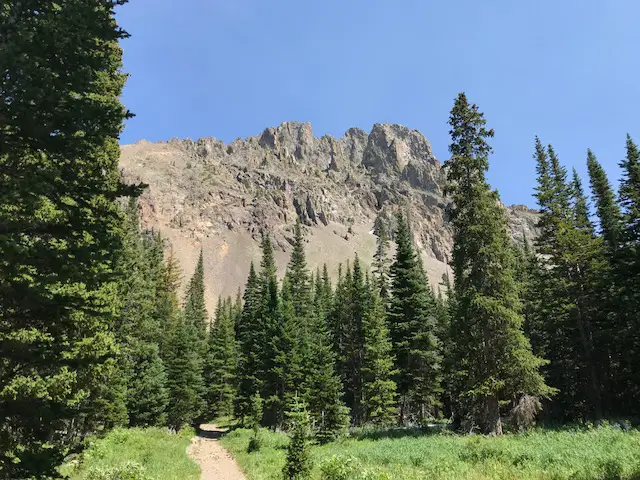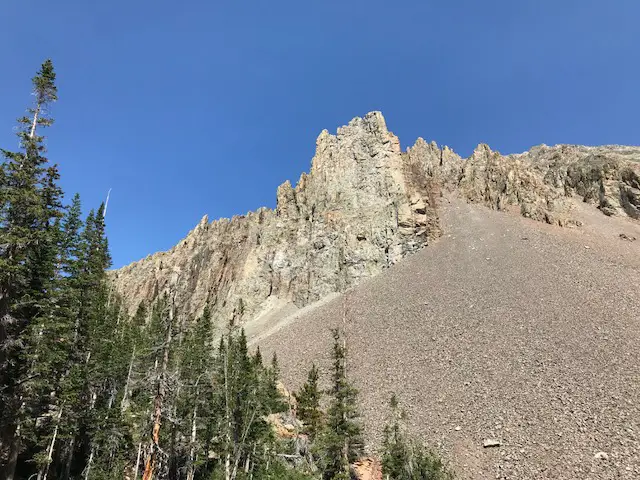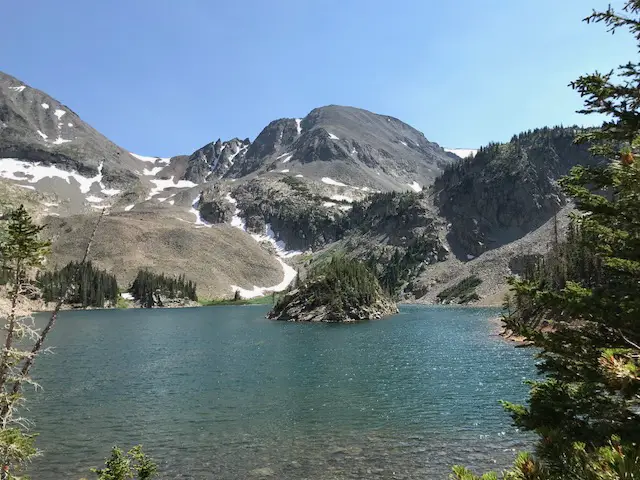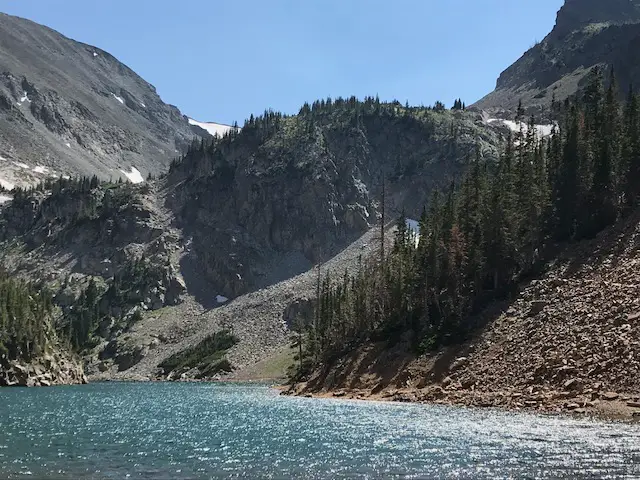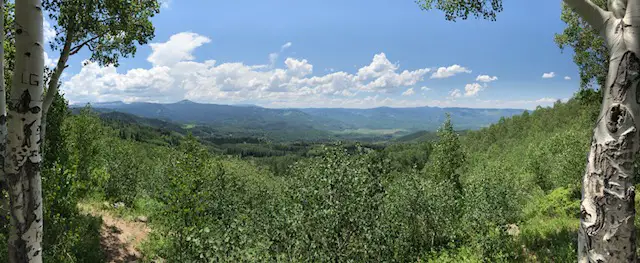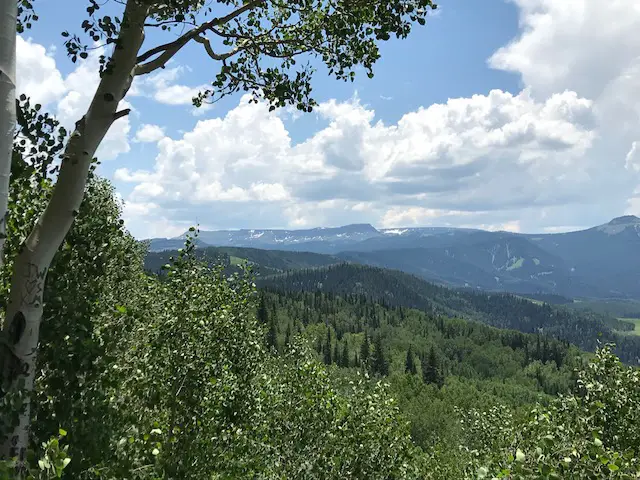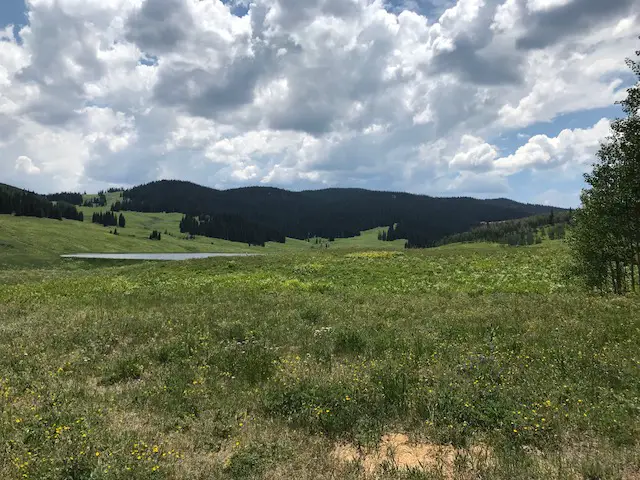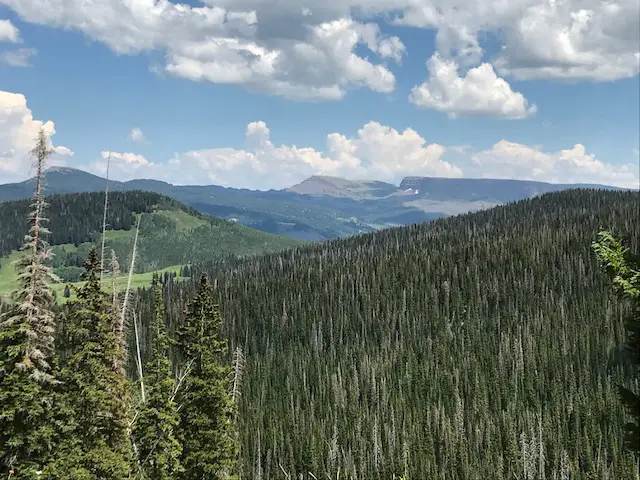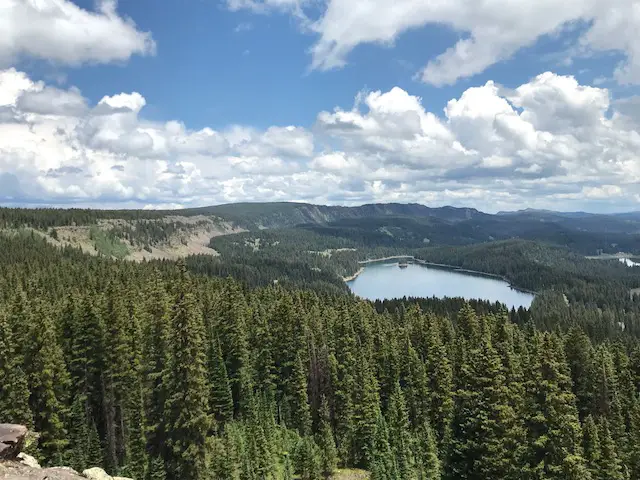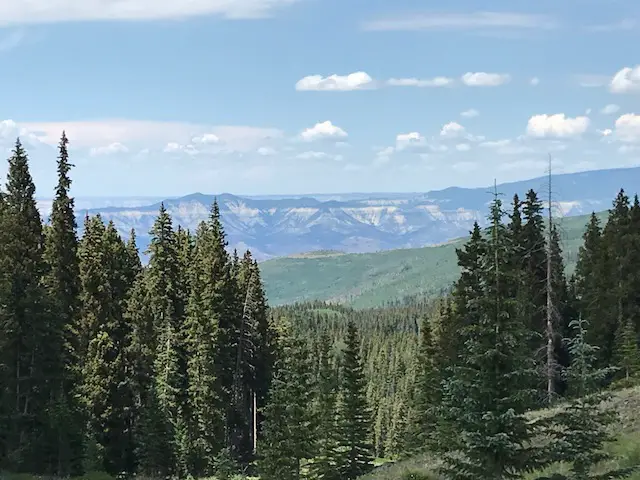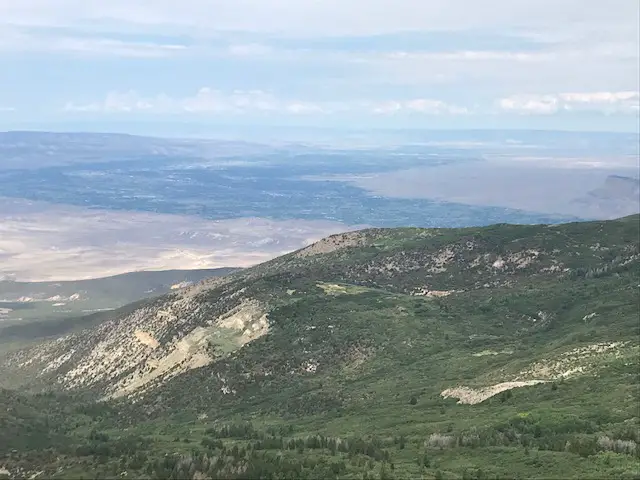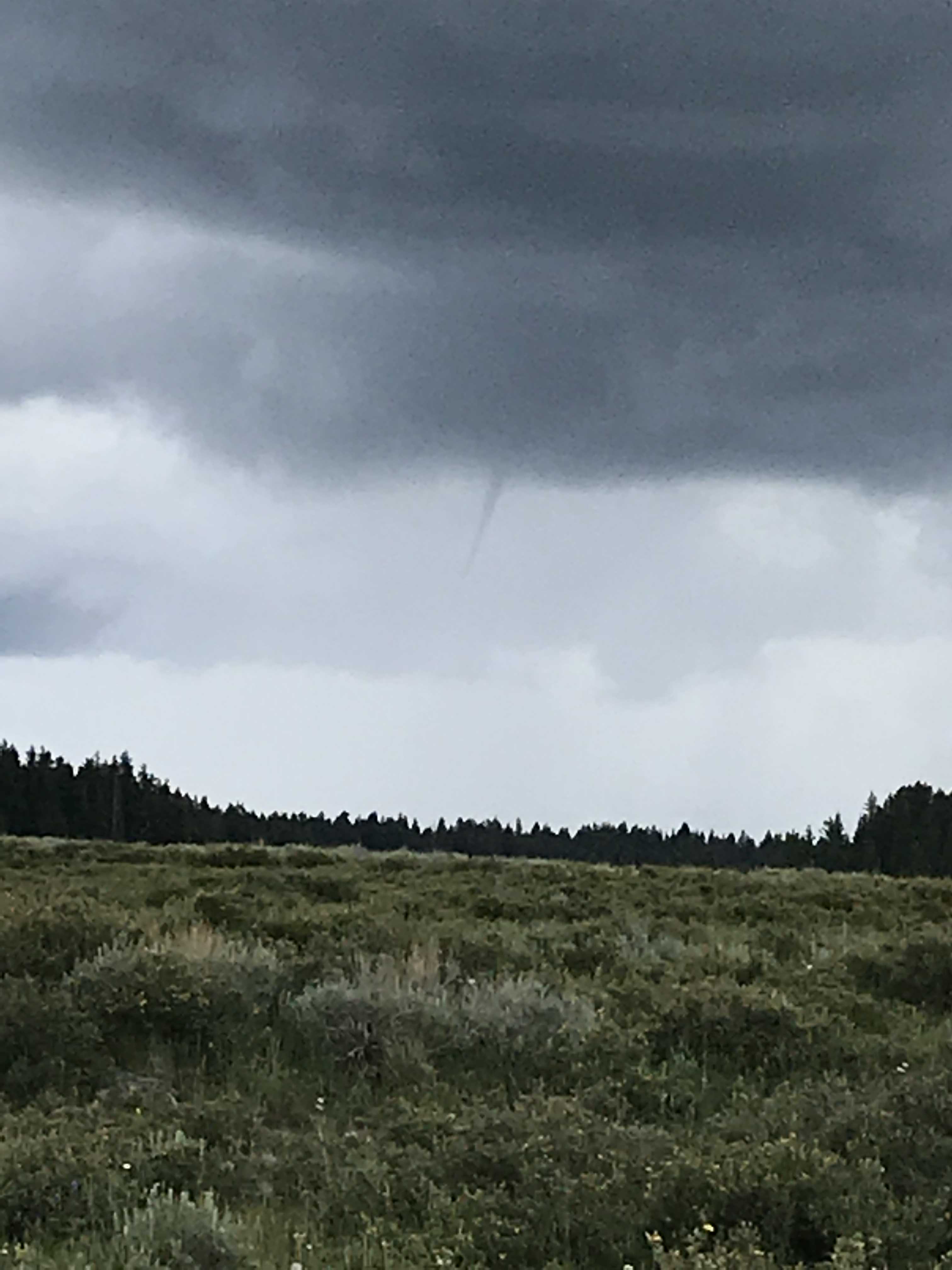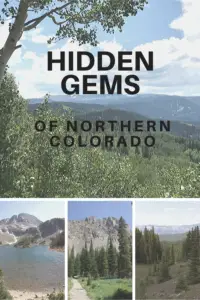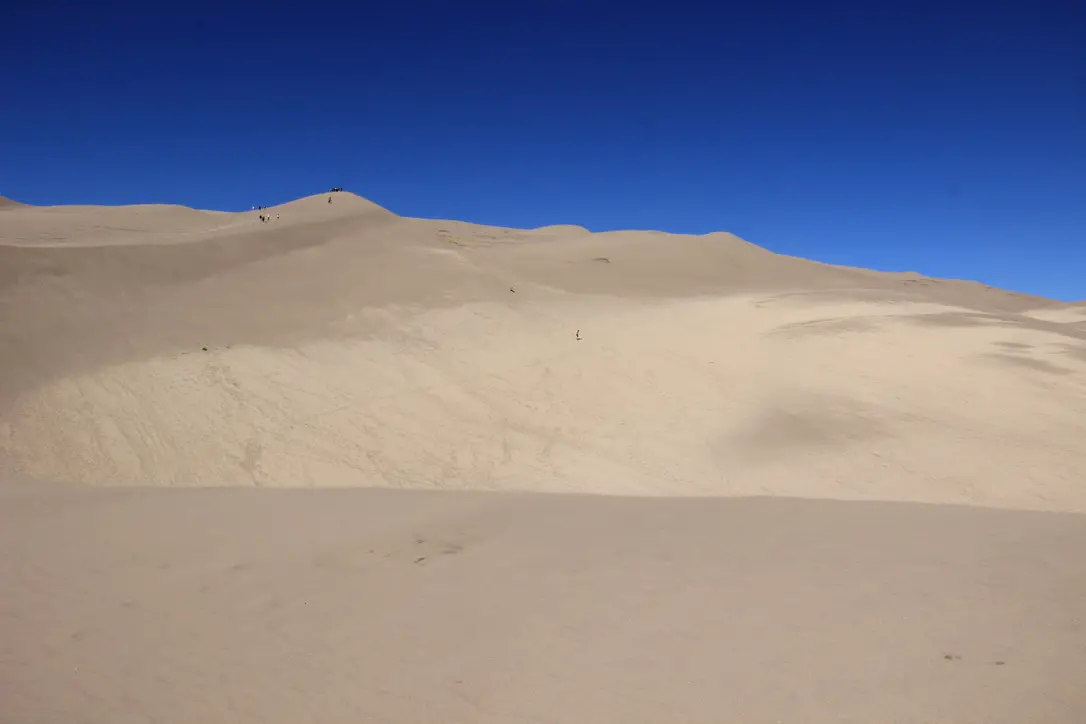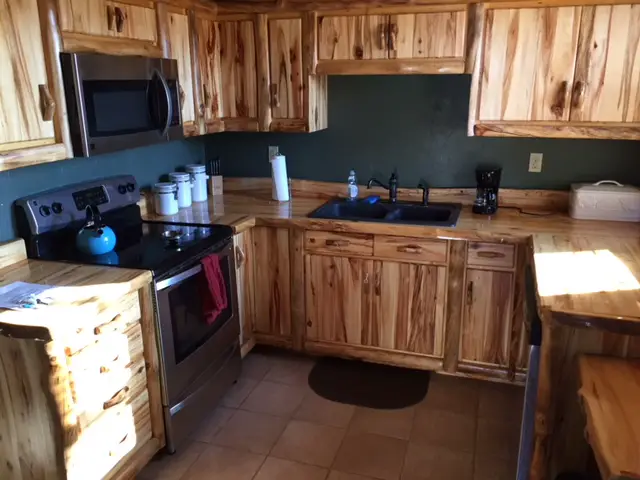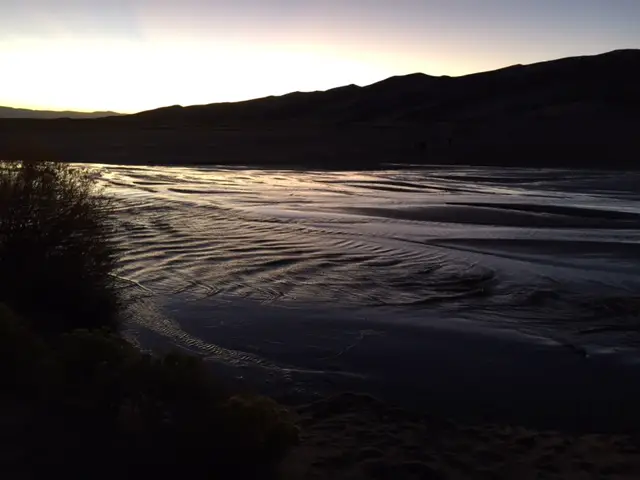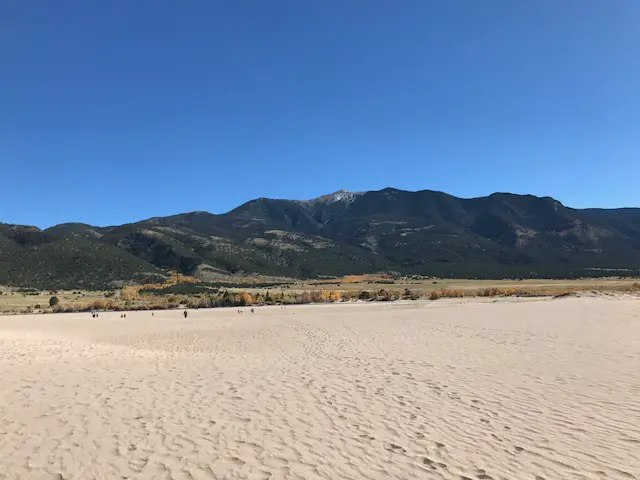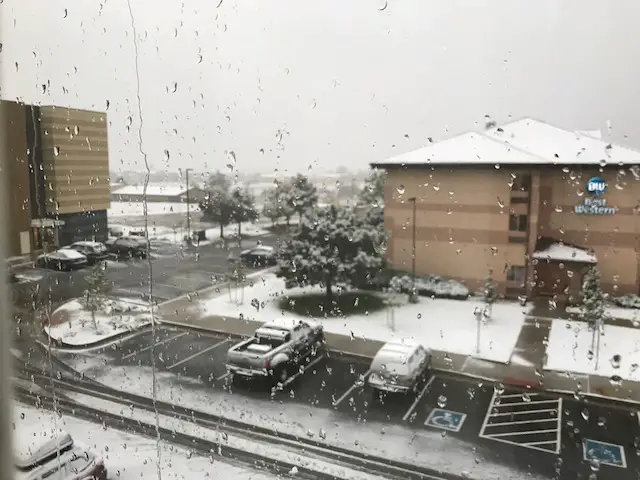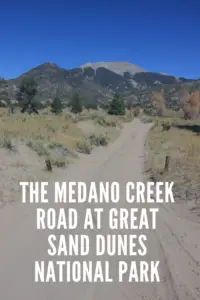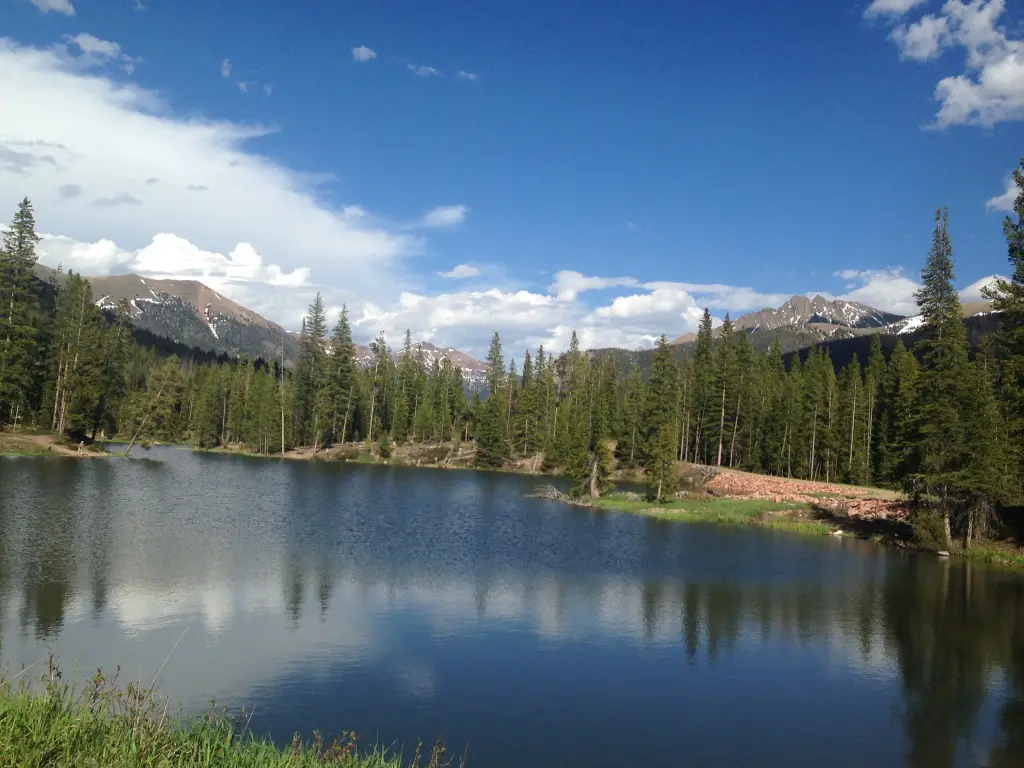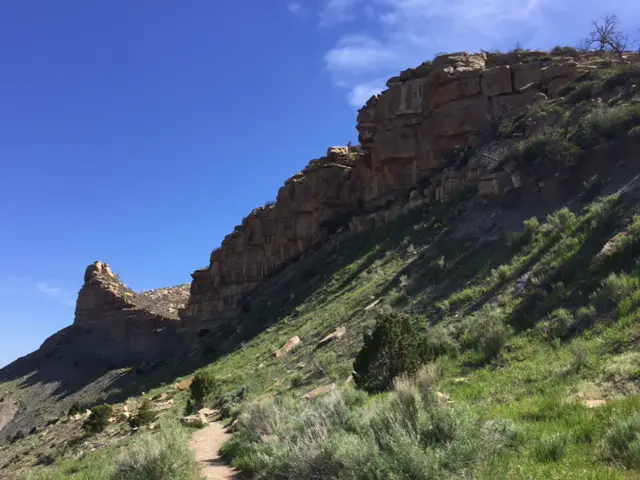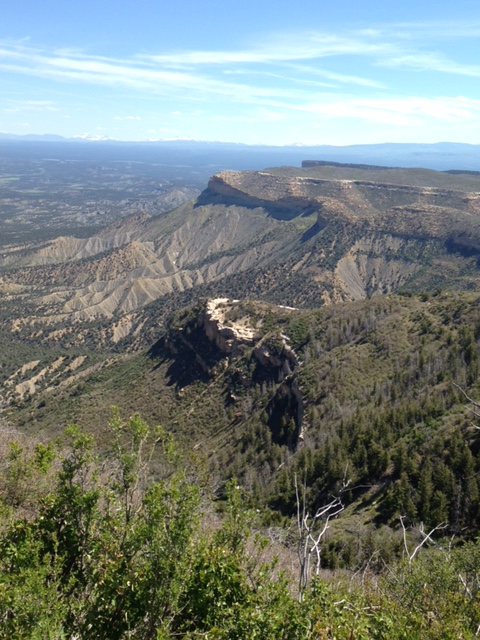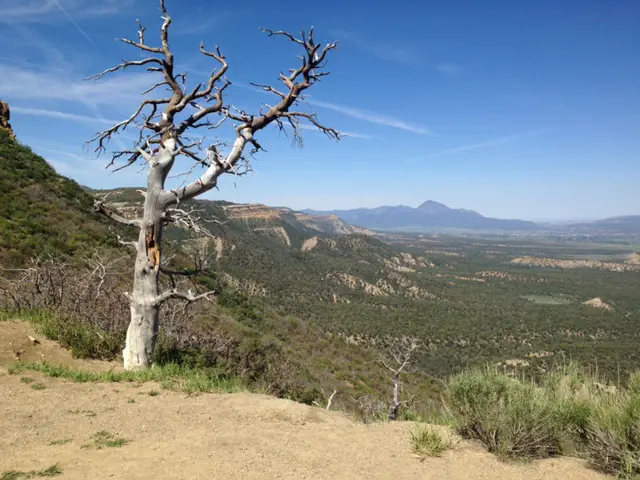One cool event to check out in early March is the Monte Vista Crane Festival in the beautiful, San Luis Valley of south-central Colorado!
The time we visited our trip started with an interesting drive down I-25 in southeast Wyoming near Cheyenne. We got as far as Wheatland, Wyoming on the interstate, and then saw the flashing sign for “I-25 closed to Cheyenne”! (It had snowed the day before, and even though it was bright and sunny strong winds were causing blowing snow and bad enough winter conditions to close I-25 and I-80 for close to 12 hours!) So, we had to turn around and drive in “a big f-ing circle”–per Mr. Trekker 😂–back to the nearest alternate route through Torrington.
Anyone who’s driven through MANY parts of Wyoming knows, alternate routes (or roads in general) can be hard to come by. 😝
After navigating some black ice…in the dark…and some sketchy drivers (I’m looking at you reckless semi-truck! 😒) we finally made it safely to Cheyenne. From there it was an easy trip to the hotel in Lakewood (with a quick stop at Chick-fil-A for dinner!) This is the price we pay to live in the INCREDIBLE Mountain West and try to travel during the fickle, early spring. 😂
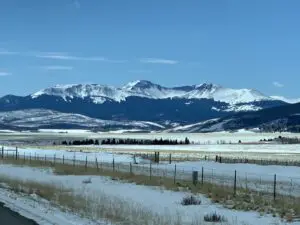
The next day we headed down the GORGEOUS Route 285 southwest of Denver. I LOVE this drive, it is always SO PRETTY! It sweeps through mountain passes and across alpine valleys. It was cool because we’ve never been to the Rockies when they had this much snow before! One of my favorite parts of the drive traverses South Park, an incredible valley in central Colorado. Click here for a video!
Colorado is one of my favorite places to visit. Click here for more posts on this awesome state!
San Luis Valley, Colorado
Eventually, we arrived in the BEAU-tiful San Luis Valley!
The San Luis Valley, in southern Colorado, is an amazing place! It is the world’s largest high-altitude (alpine) valley that stretches over 100 miles north-to-south and is almost 75 miles in width. It was once the bottom of a large lake and this is evident as the valley floor is flat as a pancake! The valley is especially striking as it is lorded over on three sides by the Sangre de Cristo (Blood of Christ) mountains that reach higher than 14,000 feet! The views here are truly incredible! (Click here for a short video of the drive into the valley.)
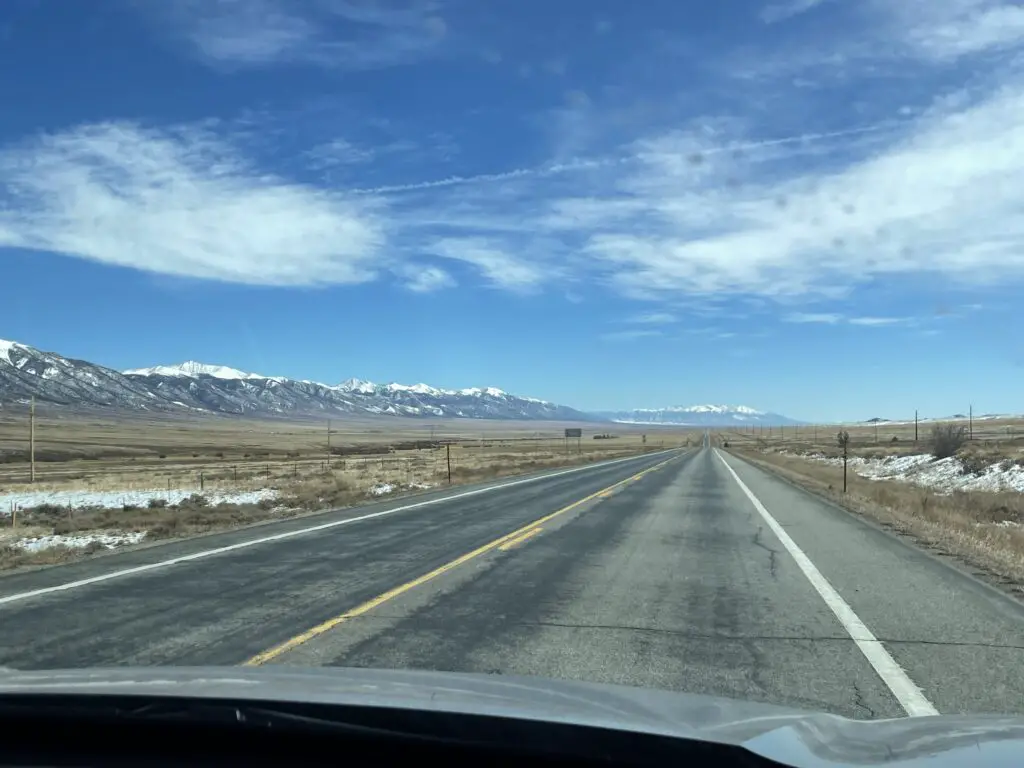
Where is the San Luis Valley?
You will find this amazing valley hidden…in the middle of nowhere. 😉 The southern tip of the valley is only about 35 miles north of the state’s southern border with New Mexico. The valley is also situated almost directly in the center of Colorado (going west-to-east). It sits around 150 miles west of the mountain town of Durango and 120 miles from I-25 (nearest to the small town of Trinidad and the larger city of Pueblo.)
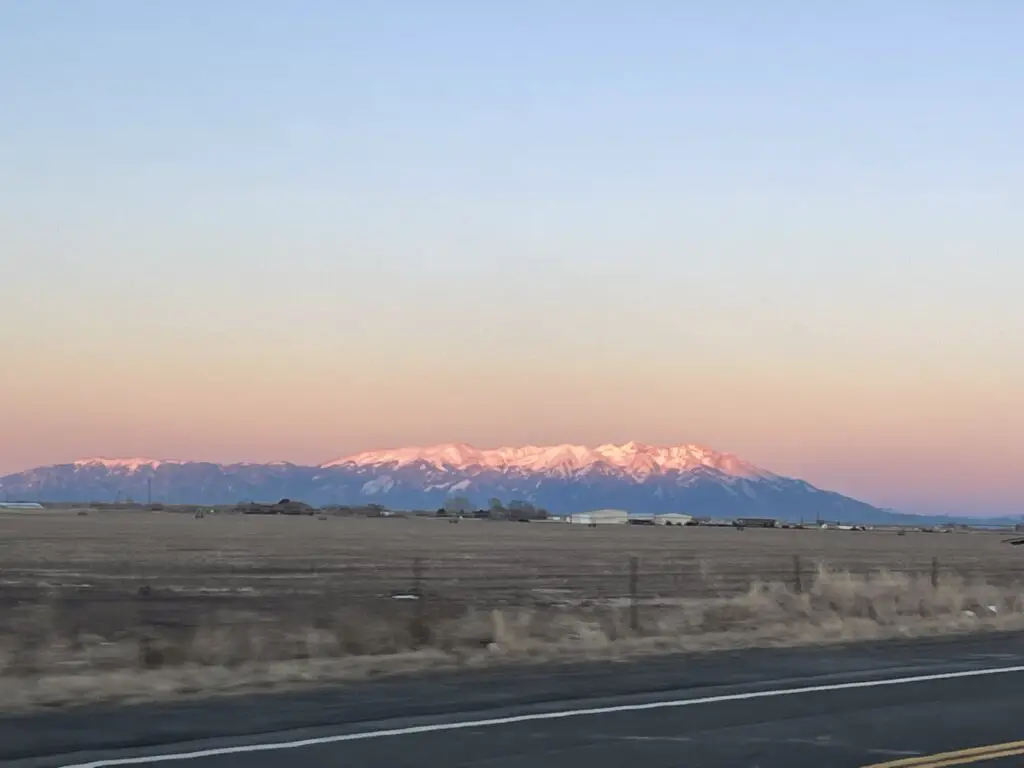
Fun Things to do in the San Luis Valley
The San Luis Valley is chock full of fun (and sometimes downright WEIRD) things to do!
Great Sand Dunes National Park
This is the second time we’ve visited this park. The first was several years ago in October (another lovely time to visit.) We were able to hike higher on the dunes this time but we still haven’t made it to the top. Those things are steep and they’re situated at like 8900 feet of elevation so you’re dealing with thinner air too! It always seems to be windy at the Dunes (but I suppose that makes sense as wind is what created them. 😉)
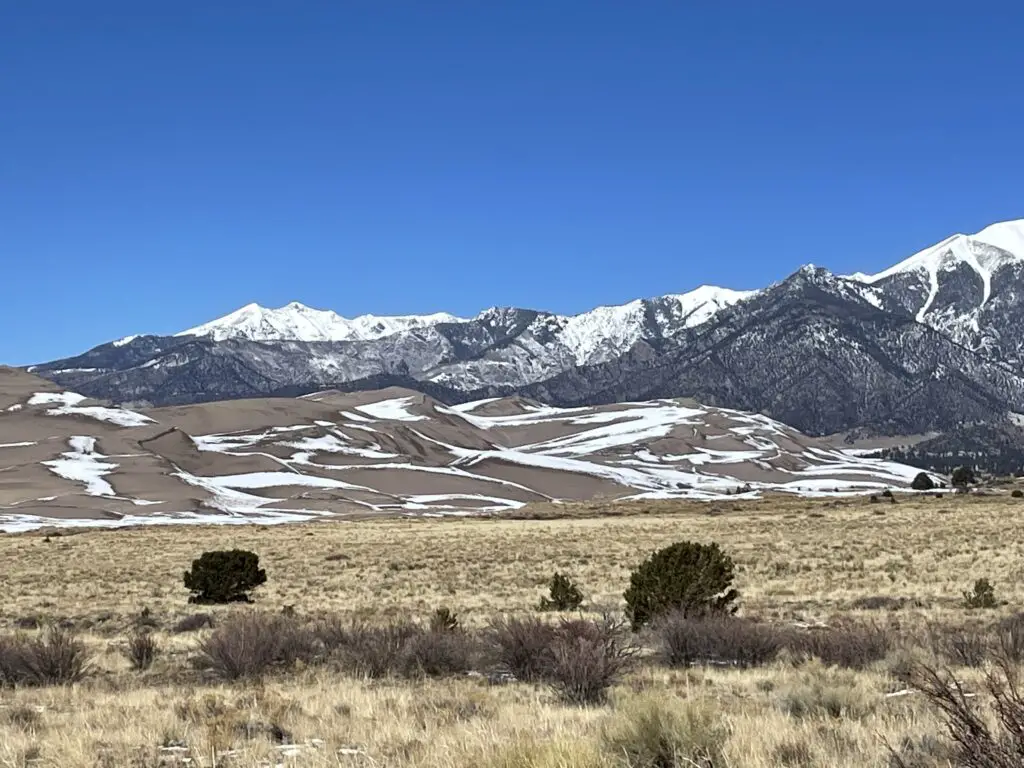
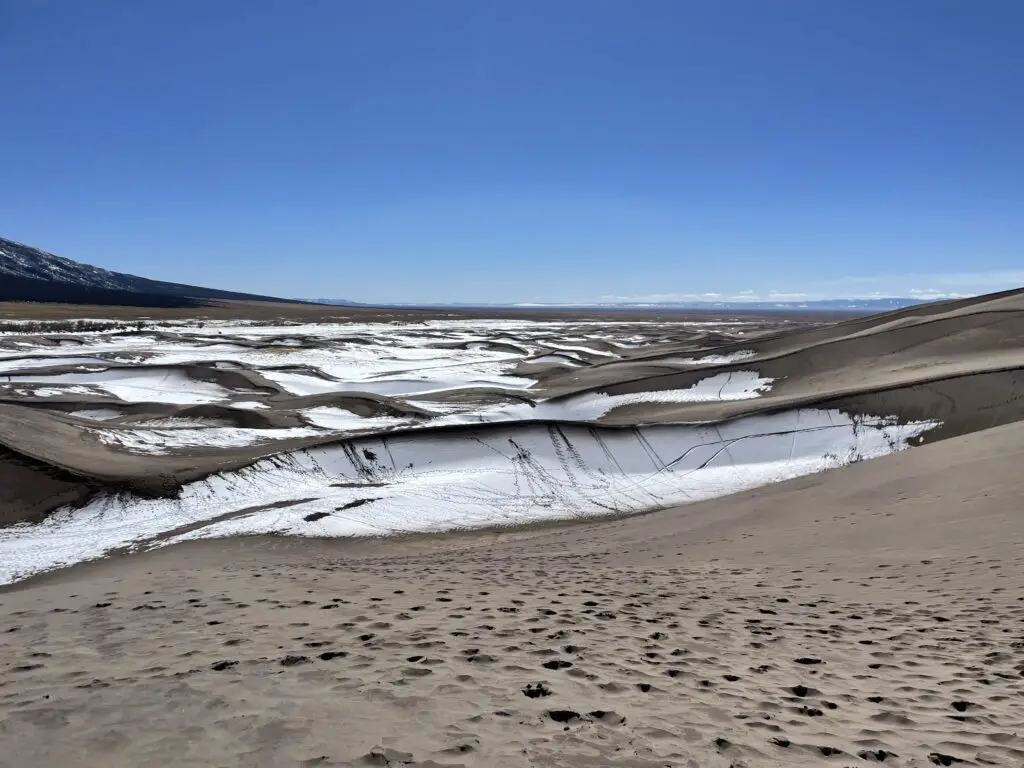

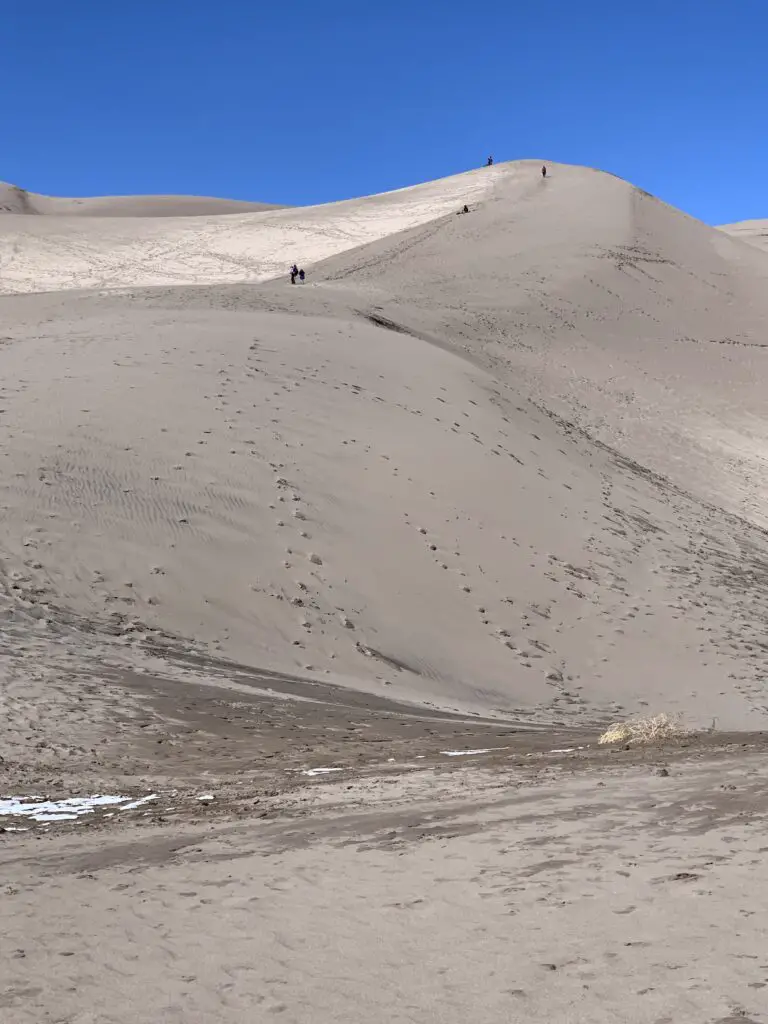
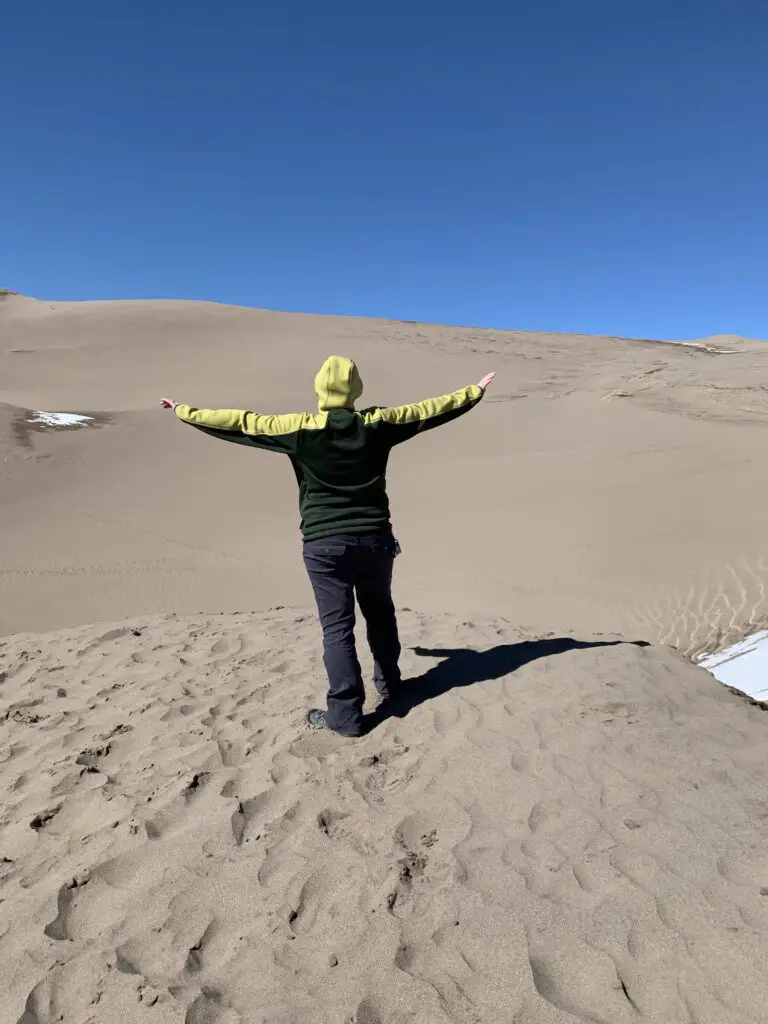
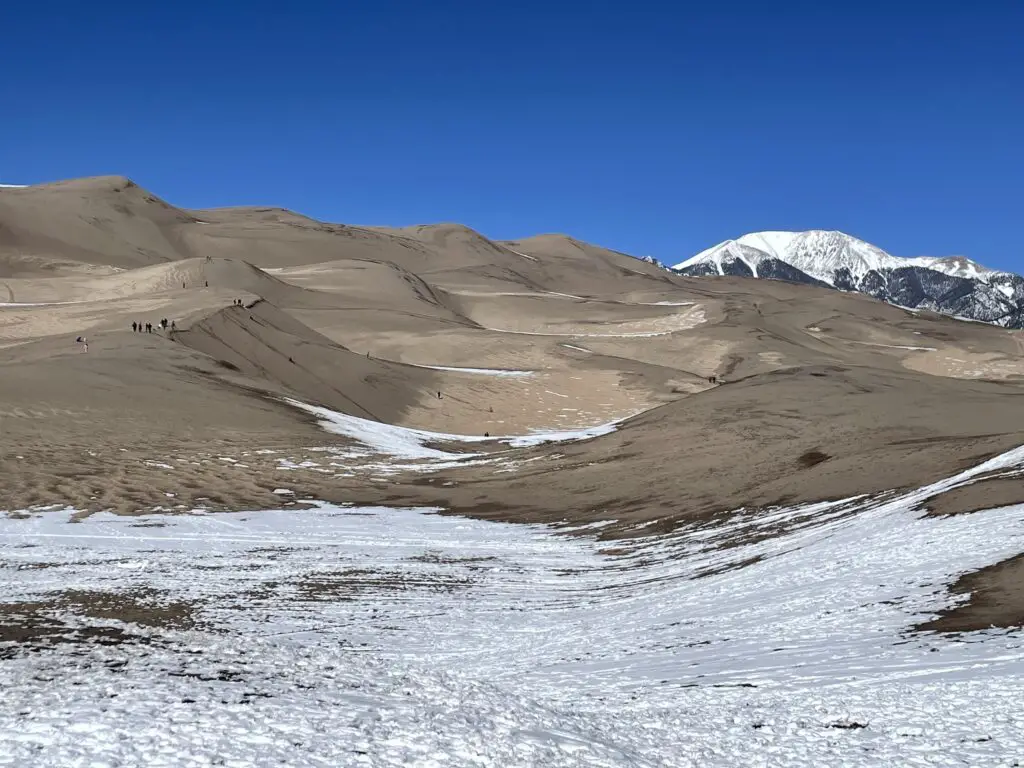
Crestone, Colorado
The small town of Crestone, Colorado is found in the northeast corner of the valley. The town has a population of only a little over 100 people but at least eight different religions offer sites here. They range from a co-ed Catholic monastery to Buddhist, Hindu, and New Age offerings. You can see a Ziggurat–a monument commonly found to honor ancient, Mesopotamian gods. There are also Buddhist and Hindu centers. This tiny town even hosts the only open-air funeral pyre (used for open-air cremation) in the country!
Aliens in the San Luis Valley?
This valley is known for one very unique characteristic, a large amount of UFO sightings! This has helped it earn the title of the “Bermuda Triangle of the West”. There have been recorded UFO sightings in the valley since the Spanish Conquistadors first came here in the 1500s! (Before that time there are stories of “Star People” found in the ancient legends of the American Indian tribes who were here far earlier.)
No one knows exactly why there are so many UFO sightings here:
-
-
- It could be due to the incredibly dark, night sky that is somewhat unique to this area. This is provided by the towering mountains that surround the majority of the valley blocking out light pollution from larger towns in the local area.
- This region is also very rural, some of the largest towns in the valley only boast populations of around 10,000 people.
- Some also suggest these sightings may be related to covert operations occurring at Cheyenne Mountain, a military base located less than 200 miles to the northeast (not too far as the secret government plane flies. 😮 😉)
-
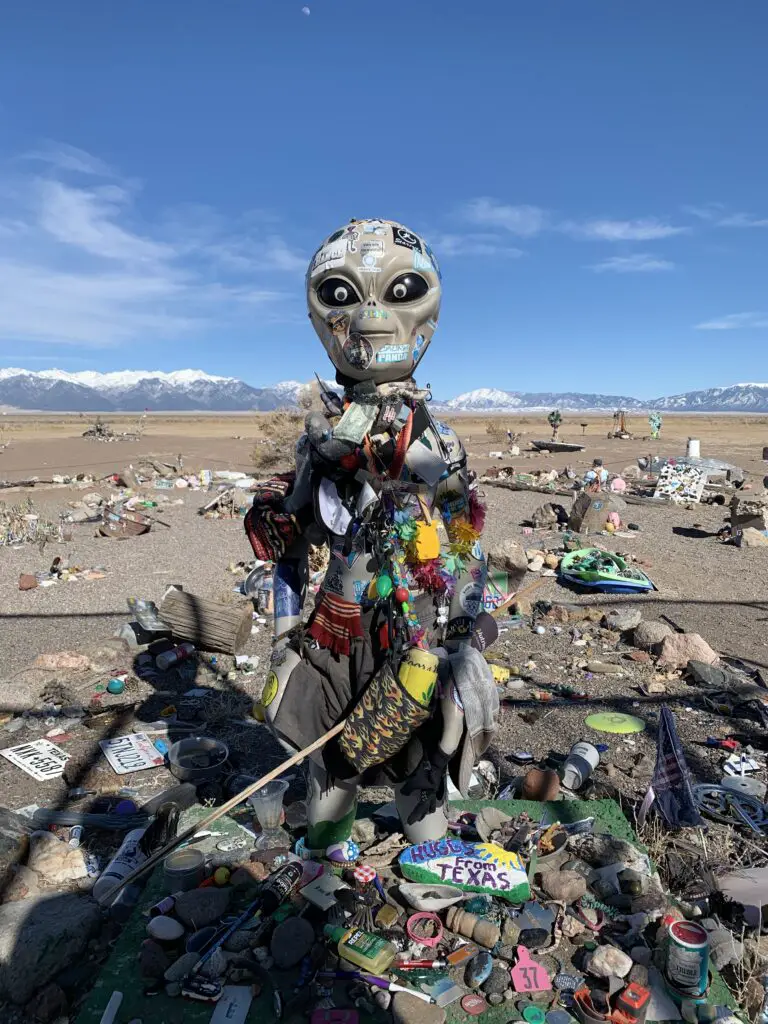
Whatever the reason though, there are more UFO sightings here than at the infamous, Roswell, New Mexico.
UFO Watchtower!
Continuing with the “out-of-this-world” tradition of the San Luis Valley is the UFO Watchower! We discovered this unique locale the first time we visited the valley. We literally stumbled on it as we were driving down the road. 😂 We didn’t have time to stop then so Mr. Trekker promised we could return on the next trip!
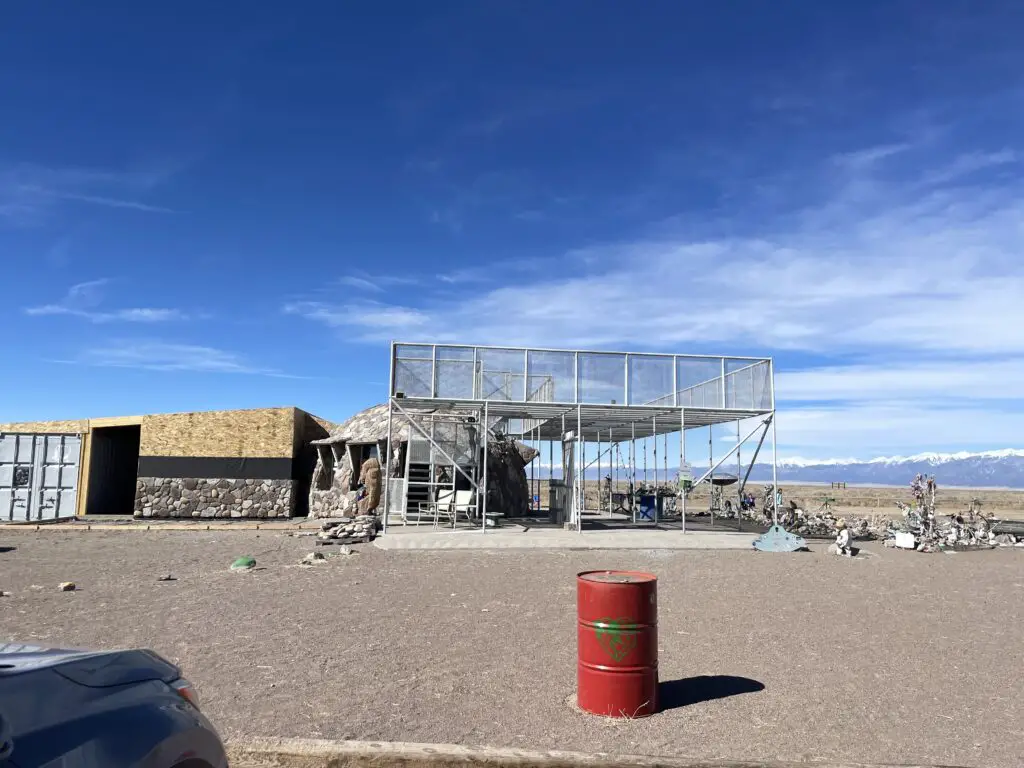

It takes a little imagination and a BIG open mind to fully appreciate the quirkiness of the site. The story goes that two large, energy vortices are found here. One spins clockwise, the other counterclockwise. (They are said to be connections to other dimensions/universes. Supposedly, 25 different psychics have visited the site and have confirmed this.) Several have also claimed that two large “beings” protect the vortices (they’re supposed to be friendly as long as you are respectful. 😇)
I’m not sure I believe any of this, but science has shown the earth has different magnetic fields, so maybe these could influence the area? Neither of us sensed anything strange but maybe we’re just skeptics? 😝
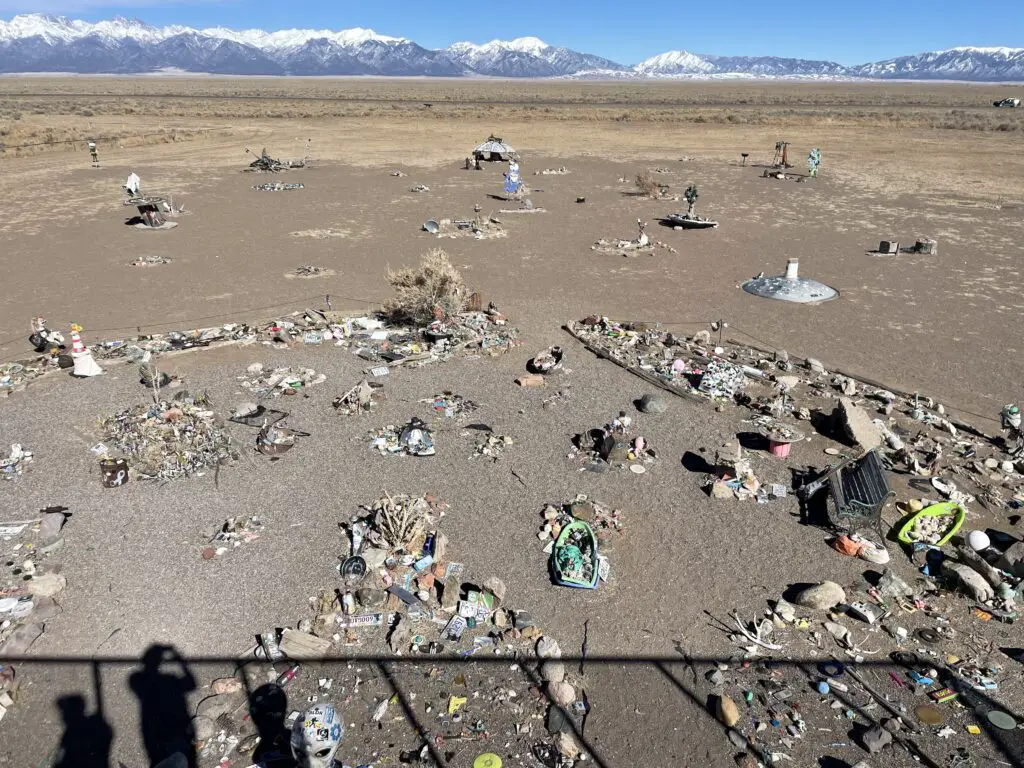
There is “The Garden” where people leave trinkets (I left a bobby pin, it’s all I had in my pocket. 😇) Some of the psychics also claim there is a mile-long mothership buried in the ground underneath the watchtower. (Could this help explain all the UFO sightings? 👽🖖)
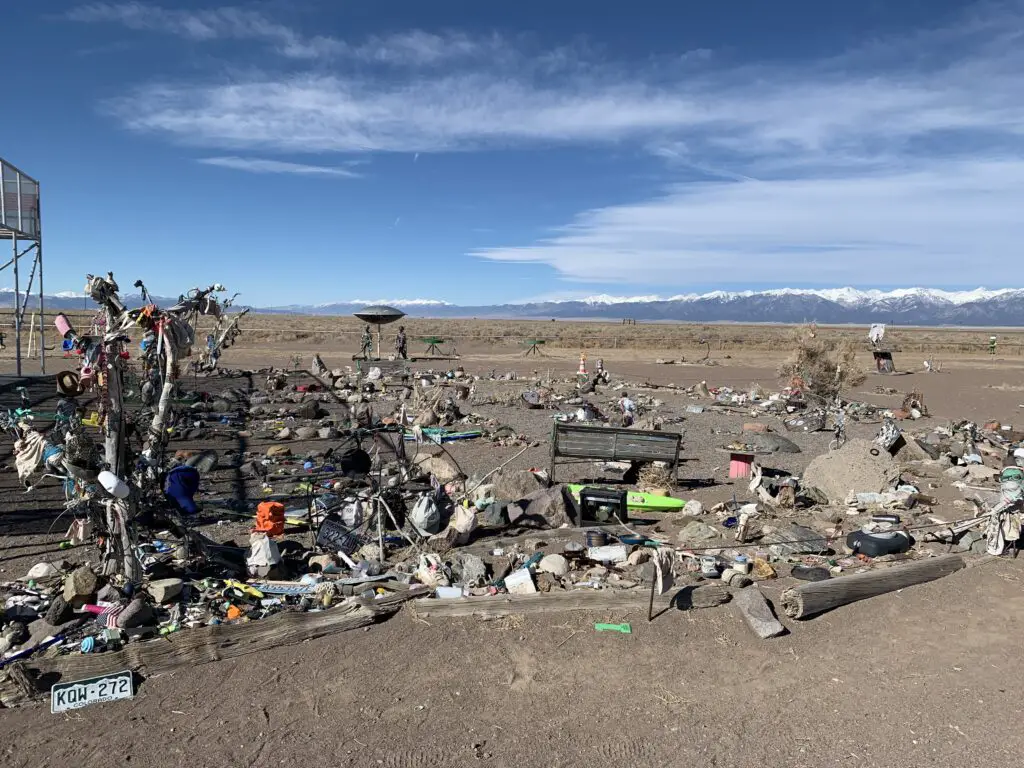
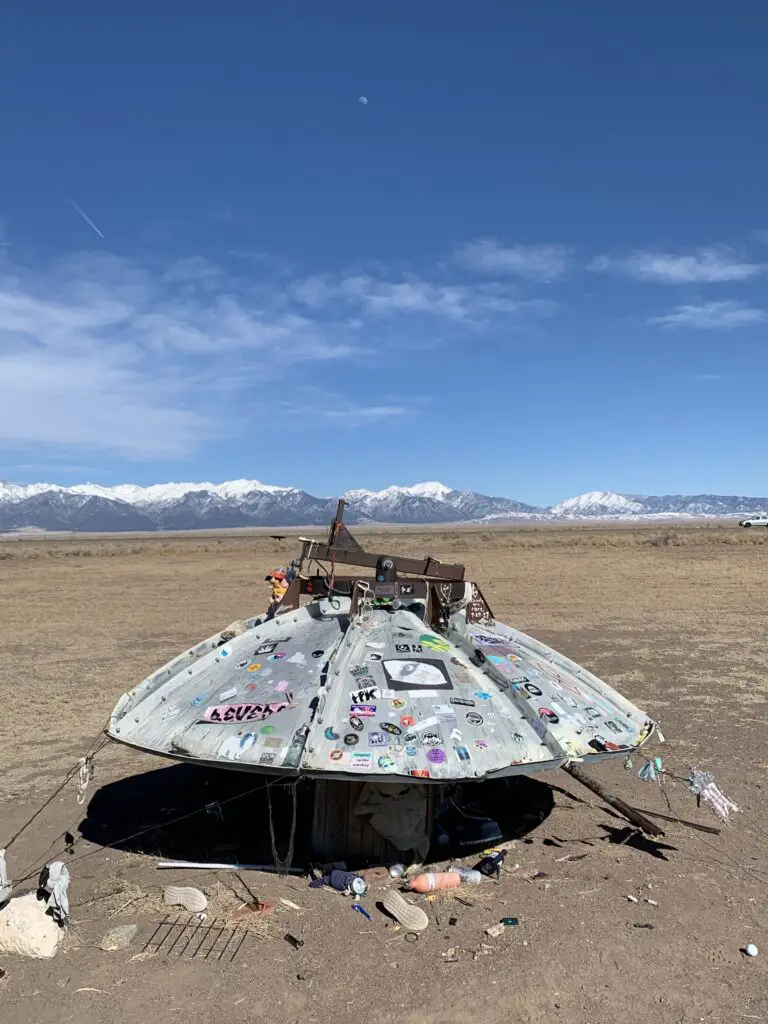
Where is the UFO Watchtower?
The UFO Watchtower sits around three miles north of the tiny community of Hooper, Colorado. You will find it on Route 17, a little more than halfway down the San Luis Valley. It is situated around 25 miles north of one of the largest towns in the valley, Alamosa, and about 60 miles south of the town of Salida.
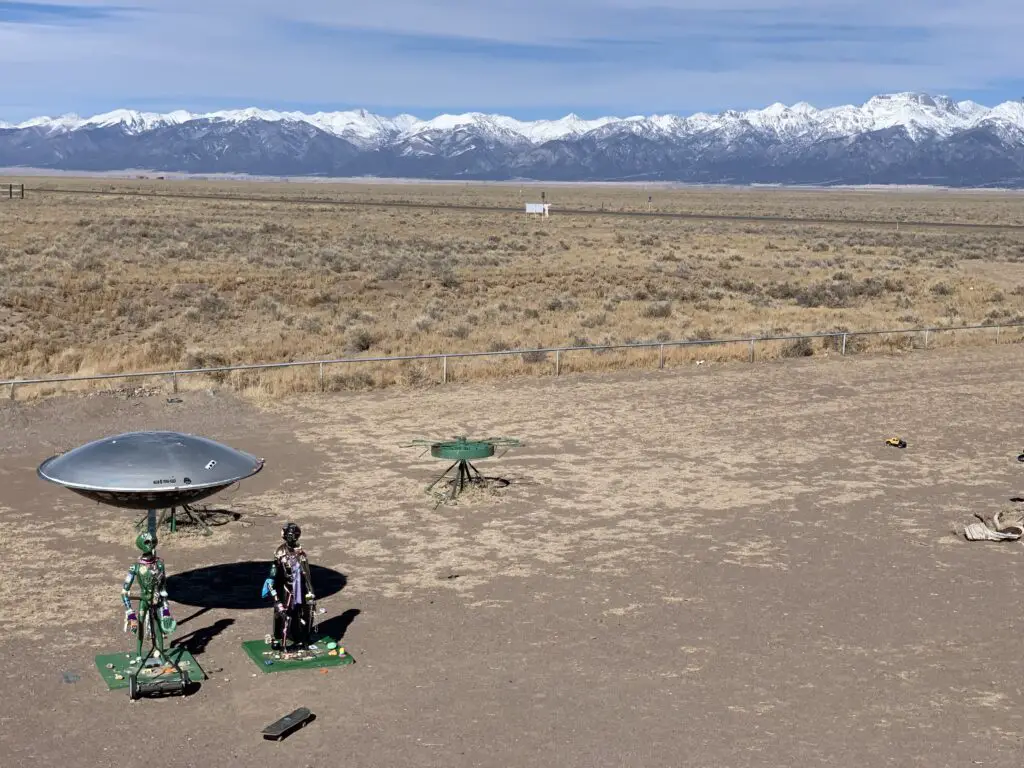
The friendly proprietor of the site claims that since the destination opened in May of 2000 around 231 “tourists from outer space” have been spied in the night sky over the valley. (The owner claims she’s seen around 28 “things she can’t explain”.)
Sandhill Cranes!
The main reason we chose this weekend to visit the San Luis Valley is that it was the date of the annual, Sandhill Crane Festival (it occurs every year in early March.) We always enjoy watching (and hearing!) the cranes fly over our area every fall and spring, their unique song echoing across the Hills as they fly high on the thermals.
We actually learned while we were down there that the Cranes that fly over the Black Hills are NOT the ones we were watching in the San Luis Valley. These are the greater Sandhill Cranes that migrate to the Yellowstone area for the summer. The ones that fly over our house are the lesser Cranes who summer in Canada.
You can view the cranes, feeding, flying, and “loafing” about all around Monte Vista. We especially enjoyed visiting the Monte Vista National Wildlife Refuge where we saw a bunch of geese too!
Click here for a video of the cranes, their incredible song and their “flight ballet”…

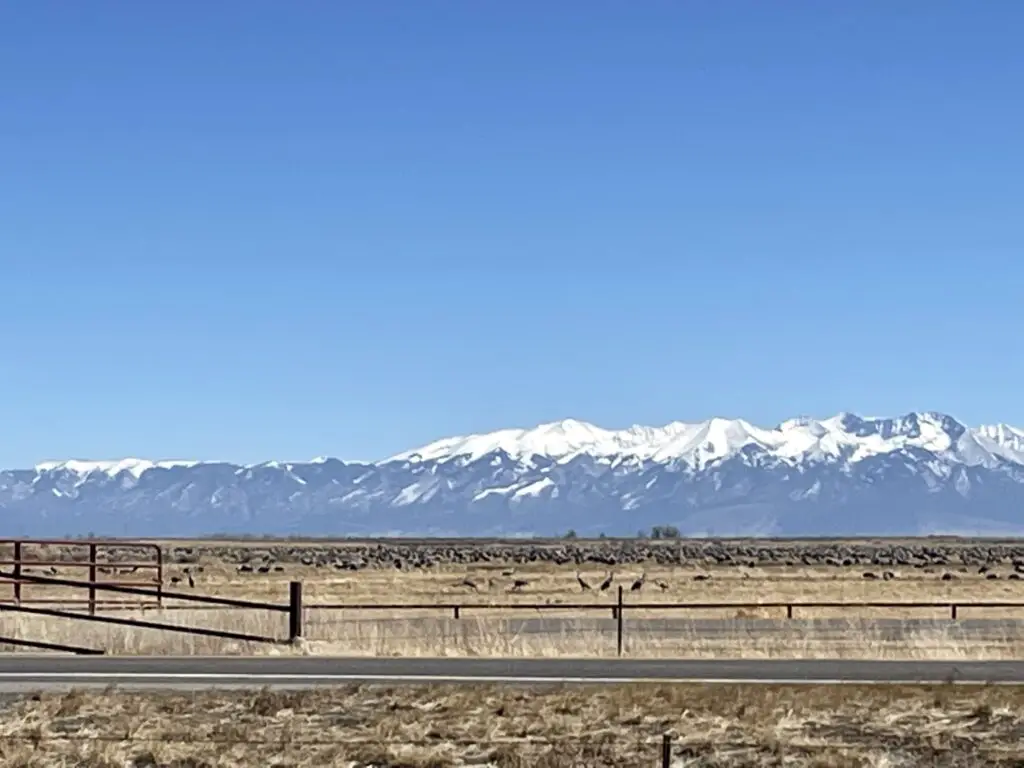
Places to Eat in the San Luis Valley
The Trekkers always find great places to eat on our adventures:
—The Cow –a yummy place for breakfast (This locale is not actually in the San Luis Valley. It is located in Morrison, Colorado, not far from the Red Rocks Amphitheater.)
—San Luis Valley Brewing Company–Alamosa, Colorado. A good place for dinner and/or drinks
–Campus Cafe–Alamosa, Colorado. Another great place for breakfast (and probably the best meal we had all weekend!)
—Purple Pig Pizzeria–Another fun place for a post-adventure meal!
If you want to explore a lesser-known part of the incredible state of Colorado, check out all the amazing San Luis Valley has to offer!
Have you checked out any of these sites in the San Luis Valley? Tell me about them in the comments!
Did you enjoy this post? Pin it!
Like what you read here today? Please feel free to leave a comment, like or share this post! Add your email at the bottom of the page, or the sidebar to the right, to be notified when a new post is published. By signing up for the email list, you will also receive a free copy of the Tranquil Trekker’s Top 10 Tips of Trekking Do’s and Don’ts!
You can also follow the blog on social media by clicking the links below!
